

‘Screaming, chanting, struggling teenagers’: the enduring legacy of the Beatles tour of Australia, 60 years on
Professor of History, Macquarie University
Disclosure statement
Michelle Arrow receives funding from the Australian Research Council.
Macquarie University provides funding as a member of The Conversation AU.
View all partners
The Beatles began their first and only tour of Australia 60 years ago this week. It remains a landmark event in our social and cultural history.
The Beatles spent almost three weeks in Australia and New Zealand. Touching down in a wet and cold Sydney on Thursday June 11 1964, they played 32 concerts in eight cities: first Adelaide (where drummer Ringo Starr, suffering from tonsillitis and pharyngitis, was replaced by Jimmie Nicol), then Melbourne (with Starr again), Sydney, Wellington, Auckland, Dunedin, Christchurch and two final shows in Brisbane on June 29 and 30.
Charming and irreverent as they were, The Beatles themselves were only part of the reason the tour was so memorable.
It was the hordes of screaming fans who followed their every move that astonished onlookers.
The rise of Beatlemania
By 1964, Australian teenagers had access to a global youth culture. As the feminist author Anne Summers, then an Adelaide teenager, recalled in her memoir Ducks on the Pond:
It was rare for world-famous pop stars to come to Adelaide and unheard of for a group at the height of their celebrity.
That Australian teenagers had the opportunity to see The Beatles in person in 1964 was due to a stroke of luck for tour promoter Kenn Brodziak . In late 1963, Brodziak secured the then up-and-coming Beatles for a three-week tour of Australia at a bargain rate.
By the time the tour took place, the Beatles were the biggest band in the world.
Their popularity had skyrocketed throughout 1964. I Want To Hold Your Hand went to number one on the Australian charts in mid-January and the top six singles that year were all by The Beatles .
So when the band arrived here, Beatlemania was the predictable result: crowds of surging, screaming young people, who turned out in massive numbers wherever the Beatles appeared.
While the earliest rock ‘n’ roll fans (and even performers) in the late 1950s were often labelled juvenile delinquents , there were too many teenagers swept up in Beatlemania for them to be dismissed in the same way. The crowds became a spectacle in themselves.
‘A chanting mass of humanity’
Beatlemaniacs were loud and unruly. The Daily Telegraph reported:
50,000 screaming, chanting, struggling teenagers crowded outside Melbourne’s Southern Cross Hotel this afternoon to give the Beatles the wildest reception of their careers.
It was a similar story in Adelaide. The Advertiser described:
police, their arms locked together and forming a tight circle around the car carrying the Beatles, had to force a path through the surging, screaming crowd […] Police said they had never seen anything like it.
The crowds overwhelmed observers with their sheer size – a “solid, swaying, chanting mass of humanity”, according to The Age – and noise. The Daily Telegraph consulted an acoustics expert to conclude “Beatles fans scream like [a] jet in flight”.
Beatlemania was visible (and noisy) evidence of a growing teenage consumer market and the assimilation of rock music, dancing and youth culture into the leisure practices of middle-class youth. It was proof (if anyone still needed it) the youth market was highly developed and extremely lucrative.
The speed with which companies found a ready audience for Beatles merchandise (wigs, souvenirs, magazines) demonstrated the relative affluence of the youthful consumer in mid-1960s Australia. This market would continue to grow throughout the decade.
A new idea of youth
Perhaps the most remarkable characteristic of Beatlemania was its femaleness. While not all Beatles fans were girls, it was the crying, screaming girls who attracted the most media comment.
The Daily Telegraph described them this way:
It was the girls, the nymphets of 1964 in their uniform of black slacks and duffle coats and purple sweaters – who showed the orgiastic devotion due to the young men from the damp and foggy dead end of England […] the girls wept, screamed, grimaced, fainted, fell over, threw things, stamped, jumped and shouted […] [The Beatles] were the high priests of pop culture, taking due homage from a captive, hypnotised hysterical congregation.
The references to “nymphets” with their “orgiastic devotion” tells us many Australians thought these young women were transgressing the norms expected for their era. Young women in the early 1960s were still expected to be demure and responsible. Beatles fans were breaking these rules, and helping to rewrite the meanings of youth and gender in 1960s Australia.
Beatlemania was an expression of female desire. The Beatles were powerful objects of fantasy for many fans in a world where sexual mores were slowly changing but where women were still expected to police male desire, stopping young men from “going too far”. A fantasy relationship with a Beatle became a way for young women to dream about their ideal relationship.
Screaming, chasing a Beatle down the street: these were acts of rebellion and joy that prefigured the rise of women’s liberation, with its embrace of rebellious femininity.
Beatlemania reminds us that, even if women were not always behind the microphone or playing the guitar, they have been important to the history of rock ‘n’ roll music as fans and audience members.
Beatlemania marked the ascendancy of a new idea of youth: these young people weren’t mere replicas of their parents, but they were not juvenile delinquents, either. The Beatles tour drew young Australians more closely into a transnational youth culture, fostering the development of a distinctively Australian variant here.
Beatlemania also demonstrated the massed power of youth. By the end of the 1960s, many Australian teenagers were gathering on the streets to protest, rather than celebrate, and to make political demands, rather than to scream.
- Australian history
- The Beatles
- Rock 'n' roll

Student & Academic Services Officer

Dean (Head of School), Indigenous Knowledges

Senior Research Fellow - Curtin Institute for Energy Transition (CIET)

Laboratory Head - RNA Biology

Head of School, School of Arts & Social Sciences, Monash University Malaysia
- SYDNEY, NSW
- MELBOURNE, VIC
- HOBART, TAS
- BRISBANE, QLD
- ADELAIDE, SA
- CANBERRA, ACT
Beatlemania revisited: Adelaide relives iconic 1964 tour
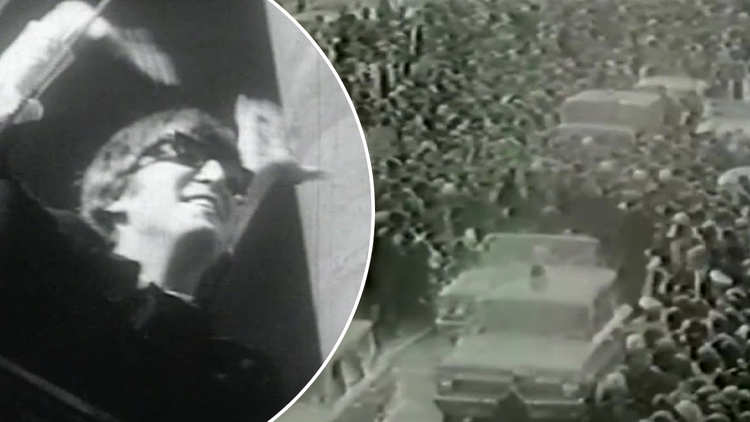
- entertainment
- South Australia
Send your stories to [email protected]
Auto news : Victorian number plate sells for millions.
Top Stories

Lawyers to argue Lehrmann has no rape case to answer

Pursuit of sporting superstar watched by 95 million people

'Two-horse race' emerges as David Koch 'lobbying' for AFL chairman role

Massive waves hammer Bondi Beach as warning issued
When We Was Fab: Inside The Beatles Australasian Tour 1964
The Beatles landed in Australia at Sydney's Mascot airport just before 7.45am on Thursday 11 June 1964. Their Australian tour consisted of 20 concerts. There were two shows performed each playing day, at 6pm and 8.45pm, as follows:
Adelaide (4 concerts) - Friday 12 June and Saturday 13 June Melbourne (6 concerts) - Monday 15 June, Tuesday 16 June, Wednesday 17 June Sydney (6 concerts) - Thursday 18 June, Friday 19 June, Saturday 20 June Brisbane (4 concerts) - Monday 29 June, Tuesday 30 June
Ahead of the 60th anniversary this June of The Beatles’ historical – and hysterical – visit to Australia, music fans will be able to buy the ultimate souvenir of the tour - the most brilliantly researched, assembled and lavishly presented book - with the publication of When We Was Fab: Inside The Beatles Australasian Tour 1964 by Andy Neill and Greg Armstrong.
The importance of The Beatles' Australian tour remains deeply significant, not only in the memories of baby boomers who lived through it, but also to today’s millennials who wish they had. It remains as one of the rare "where-were-you-when-it-happened?" moments for Australians of a certain age, and not just because of the music. The Beatles' two weeks in Australia were marked by the sorts of massive crowds and mass adulation that have never truly been reached again.
Scenes of the band disembarking at Sydney airport in the rain and greeting the crowds from their Kings Cross hotel (now a Macleay Street apartment block) are indelibly marked into the national psyche. In staid Adelaide, a staggering 300,000 people lined the streets to catch a glimpse of the world’s pop heroes. That welcome is officially acknowledged as the largest ever crowd to welcome the Fab Four.
More than all that, the tour continues to be celebrated as a major landmark in the growth of the Australian nation and an extraordinary cultural turning point, a coming of age for our country and a huge and lasting step in the advancing development of our youth and arts culture. It set the stage in Australia for the remainder of the '60s as well as the first half of the '70s, and it remains a major highlight of the Beatles’ remarkable career. And a unique one, given not only the unprecedented mania, but Ringo's unavailability for the beginning of the trip - which led to the temporary drafting of unknown drummer Jimmie Nicol - and the fact that the Beatles themselves made very little income out of the tour, given their agreement with Australian promoter Kenn Brodziak was made before Beatlemania really took hold anywhere.
The 60th Anniversary of the tour follows last year's hugely successful and newsworthy Australian tour by Paul McCartney, the end of which coincided with a new Beatles single Now and Then . All of this of course followed the record-breaking release of Peter Jackson's acclaimed The Beatles: Get Back series, which was one of the most-watched television events of 2021. The Beatles remain a ubiquitous musical presence.
Written and compiled by UK-based New Zealander Andy Neill (whose previous work has included acclaimed books on The Who and Rod Stewart & The Faces) and Melbourne-based Beatles expert Greg Armstrong (co-host of the world's longest-running Beatles radio show), When We Was Fab: Inside The Beatles Australasian Tour 1964 is the definitive account of this most extraordinary Australian cultural turning point. It tells the story in unprecedented detail, with lavish, eye-popping illustration - using hundreds of evocative and mostly never-before seen images, including original documents, press clippings, vintage memorabilia and hundreds of unpublished photographs - and is beautifully designed.
Based entirely on exhaustive first-hand research spanning two decades, When We Was Fab: Inside The Beatles Australasian Tour 1964 is authoritatively written by experts on the subject. The authors’ process involved sourcing hundreds of original newspapers, magazines and business documents as well as first-hand interviews with over 100 key participants – many of whom have not previously shared their memories – including promoters, support acts, press and radio personalities, as well as original fans who came out in their thousands to see the Beatles. As a result, a vast amount of new information behind those extraordinary weeks appears for the first time, correcting many ‘facts’ misreported for six decades. It really will be the last – and lasting – word.
The world continues to love and enjoy the Beatles. Their music resonates with each new generation. As has occurred with past celebrations of the tour, the 60th anniversary in June 2024 is certain to raise significant interest around Australia, and When We Was Fab: Inside The Beatles Australasian Tour 1964 is the brim-filled, ready-made one-stop-shop glossy full-colour coffee-table deluxe book of stories with nearly 1,000 images relating to those wild few weeks.
When We Was Fab: Inside The Beatles Australasian Tour 1964 by Andy Neill and Greg Armstrong is published by Woodslane Press and will be released 1 June 2024.
You May Also Like
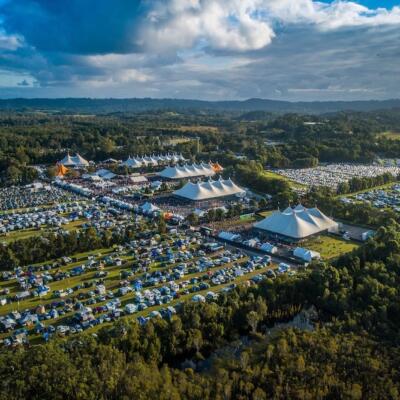
Bluesfest 2024
Arts & entertainment features.
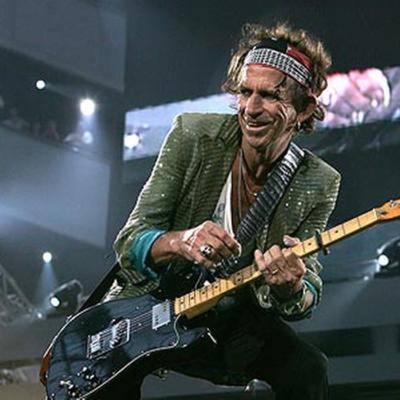
How To Dress Like A Rock Star
Fashion & lifestyle features.
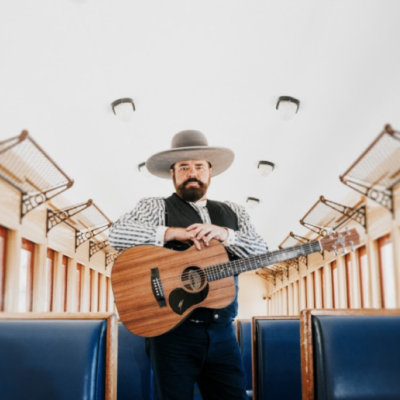
Aussie Rock Legends: Andrew Farriss (INXS)
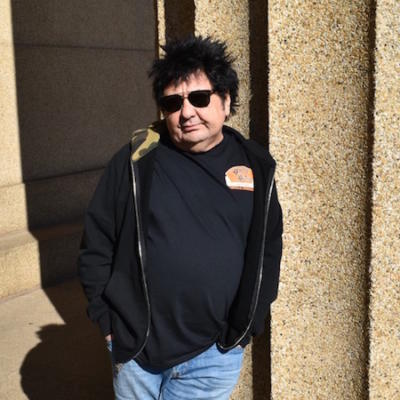
Aussie Rock Legends: An Interview With Richard Clapton
Arts & entertainment interviews.
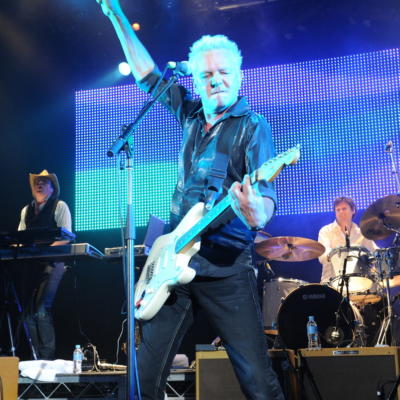
Aussie Rock Legends: An Interview with Icehouse's Iva Davies
The Beatles touched down in Australia 60 years ago — our culture was never the same
In the early 1960s, Australia was still besotted by 50s American rock'n'roll and surf music.
Young music lovers would stomp and twist across dance floors the country over, and artists like Jerry Lee Lewis, Ricky Nelson and Bobby Rydell played packed houses around the country.
But the world's musical landscape was changing, thanks to four young men from Liverpool. And one meeting in July 1963 made sure that Australia would not be left out.
One big choice: The Beatles, or Gerry and the Pacemakers?
Kenn Brodziak had barely even heard of The Beatles when he sat down with the band's representatives to discuss bringing them to Australia.
The Australian concert promoter — who had cut his teeth in theatre before booking tours for the likes of Dave Brubeck, Gene Krupa, and Lonnie Donnegan — had partnered with Dick Lean of Stadiums Limited, who owned most of the country's large capital city venues. Lean wanted Brodziak to bring something fresh and vibrant to Australia to tap into a younger market.
"It was at Dick Lean's insistence that Kenn look for something for the kids," says Greg Armstrong, co-author of the new book When We Was Fab: Inside the Beatles Australasian Tour 1964.
"When Kenn went overseas looking for acts, he wasn't looking for The Beatles. He didn't know about them.
"But he had been clued into their existence by an agent in London by the name of Cyril Berlin.
"He wrote to Ken, putting forward new ideas of different artists that are bubbling through in the UK, and he mentioned The Beatles. That was the first time Kenn Brodziak had heard of them."
Berlin's letter, which is one of many key pieces of correspondence reprinted in Armstrong and Andy Neill's book, is effusive. Something big was happening with this band and Cyril Berlin knew it.
"I don't think I have ever in all my years in the business, seen such scenes of enthusiasm by the youngsters, who were quite ecstatic, and also the acclamation of grown-ups," his letter reads.
"Up til now, I have had an open mind on this group, but after seeing them at work and meeting them personally, I have not the slightest doubt that this is the most exciting and interesting group this country has ever had and will undoubtedly become internationally famous.
"There really has never been anything quite like their phenomenal success in this country and you can rest assured that they will steadily become more popular in Australasia and be quite sensational, if and when they play there."
Brodziak thought little of Berlin's suggestion. He had a London visit planned in the coming months and they could discuss new acts, whoever they might be, at that point.
"When Ken arrived in London, it wouldn't have taken him very long if he opened the newspapers or had his ear on the radio to hear that The Beatles were big business in the UK," Armstrong says.
"They were on the radio all the time with their radio programs on the BBC. Newspapers were starting to bubble through with a lot of hype, and The Beatles were starting to make a big noise."
In what seems like a stroke of very good fortune, Brodziak met up with a promoter named Arthur Howes, who offered him a list of names featuring artists available to tour.
"The list of names included Gerry and the Pacemakers and The Beatles," Armstrong says.
"He knew the name The Beatles, but he didn't know anything about them. He said, 'Well, I can't take them all, but I'll get back to you'."
He put a call through to Dick Lean back at home, who had even less idea of who The Beatles were than Brodziak. He did, however, know how he could do some quick market research.
"Key to that decision making was Bruce Stewart, Dick Lean's friend," Armstrong tells.
"He was a young DJ on 3DB radio, and he knew about The Beatles."
He was also booking charity concerts at Melbourne's Festival Hall, which were popular with teenage music fans. So, Lean put him to work.
"Dick asked Bruce to ask the kids in the audience at this Sunday charity event," Armstrong explains. "He literally went out and asked the audience, 'Who would you like to see come out to Australia?'.
"He gave the two names and there was a little bit more applause for The Beatles. He basically went back and recommended The Beatles, Dick agreed, called Kenn back, and a verbal agreement was made to book to The Beatles to come to Australia."
A tale of two Beatles
The Beatles can't have slept much in the early 1960s. Their procession of perfect pop songs and endless string of live commitments and radio appearances puts the work ethic of most other bands to shame. They even made their first feature film in 1964. Things moved quick in The Beatles' camp.
"Months went past and a huge amount of progress occurred, whereas you could talk about other artists where years went by and perhaps not as much happens," Armstrong says.
"They were incredibly busy, they were willing to do anything. It wasn't unusual for them to be recording at EMI in the morning and then driving 200 miles on the old roads to perform in a hall somewhere in 1963.
"It's quite remarkable the output of these boys, they were writing songs in the backs of vans. 'She Loves You' was written in a van."
This means The Beatles that Brodziak agreed to tour in July 1963 were a very different proposition by the time paperwork for their Australian tour was settled almost six months later. They weren't just a bit bigger, they were becoming a cultural force. And they were worth far more money.
"The initial fee was put on the table by Arthur Howes for 1,000 pounds sterling, plus there'd be airfares and accommodation and perhaps a royalty or a part of the gate," Armstrong says.
"A thousand pounds was pretty good money for any band back then. But of course, by the time the ink got on the contract, The Beatles had absolutely taken off and it more than doubled."
It was still a great deal, even at twice the price. The band and their manager Brian Epstein could very easily have reneged and focused their attention on bigger, more lucrative markets.
"They could have commanded much more by the time the contract was actually signed by January '64," Armstrong says.
"[Epstein] honoured earlier commitments to come to Australia which is very honourable. He could have got US$50,000 a night at that point in time."
Why Adelaide mattered
All of this is covered in almost forensic depth in When We Was Fab, which Armstrong co-wrote with fellow Beatles expert Andy Neill.
Correspondence between managers and booking agents, telegrams from the band to local radio DJs, and a ton of photographs and reflections are all included in this fascinating and very in depth look at the band's sole Australian visit.
One key piece of correspondence comes from the people of Adelaide to the tour's promoters.
The Beatles were coming to Australia, but they weren't playing in Adelaide because the promoters didn't own a venue there. People weren't happy.
"The moment that Bob Francis, a 5ID radio disc jockey, realised that Adelaide were not on the on the announcement in January '64, he got on the mic on the radio and said, 'This isn't good enough. Why don't we do something about it?'" Armstrong says.
"Within a few days, 80,000 signatures were gathered by people on the street, boxed up and sent to Melbourne by Bob Francis. We put the correspondence in the book because it's almost unbelievable to even realise that that's true, but also that the span of time was so short that they gathered those signatures."
Not only did The Beatles end up visiting Adelaide, it's where they faced their largest ever crowd. Over 200,000 people lined the streets to see the band drive from the airport into the city.
The Beatles' tour is broadly considered one of the pivotal moments in Australian music history. This was more than a chance for kids to see their favourite band perform, it was an indication that the youth had a culture of their own, and anyone could participate.
"The impact was that we were in the 1960s all of a sudden," Armstrong says. "That was a lasting cultural shift in our teenage culture. Kids had their own thing.
"Bands started to form, everybody realised you can actually do something."
The Adelaide visit alone is perhaps responsible for some of the finest Australian bands of the era.
"In South Australia, there was a couple of smaller bands that joined up and became The Twilights," Armstrong says. "You're talking about a band that would go off and record in Abbey Road Studios and have great fame.
"Glenn Shorrock, John Bywaters, the names are commonly known today. These were young kids that realised 'I can do that' they want to be they want to make music, and perform and write their own songs.
"The Masters Apprentices formed out in Adelaide in the wake of The Beatles tour.
"Up in Sydney, we've got The Easybeats, Dutch English migrants forming and becoming Australia's biggest music force with Friday On My Mind.
"All of these things came in the wake of the Beatles tour and directly impacted by the Beatles as a clear signal that kids can actually do these things."
It's no surprise that Australia fell for the band. Yes, their songs were perfect, but there was a greater appeal than that.
"The Beatles came across as very much everyday people," Armstrong says.
"They weren't pompous university kids or anything like that.
"They came across as happy go lucky. They were forceful. They were a bit cheeky. And they were very funny. And I think a lot of people noticed that, 'Hey, we can do that' or try and do that."
When We Was Fab: Inside the Beatles Australasian Tour 1964 is out now.
Hear episodes of The Music Show on ABC RN right here .
- X (formerly Twitter)
- Arts, Culture and Entertainment
- Music (Arts and Entertainment)
- Science & Environment
- History & Culture
- Opinion & Analysis
- Destinations
- Activity Central
- Creature Features
- Earth Heroes
- Survival Guides
- Travel with AG
- Travel Articles
- About the Australian Geographic Society
- AG Society News
- Sponsorship
- Fundraising
- Australian Geographic Society Expeditions
- Sponsorship news
- Our Country Immersive Experience
- AG Nature Photographer of the Year
- Web Stories
- Adventure Instagram
Home News Beatlemania: the enduring legacy of the Beatles’ tour of Australia, 60 years on
Beatlemania: the enduring legacy of the Beatles’ tour of Australia, 60 years on

The Beatles spent almost three weeks in Australia and New Zealand. Touching down in a wet and cold Sydney on Thursday, 11 June 1964, they played 32 concerts in eight cities: first Adelaide (where drummer Ringo Starr, suffering from tonsillitis and pharyngitis, was replaced by Jimmie Nicol), then Melbourne (with Starr again), Sydney, Wellington, Auckland, Dunedin, Christchurch and two final shows in Brisbane on 29 and 30 June.
Charming and irreverent as they were, The Beatles themselves were only part of the reason the tour was so memorable.
It was the hordes of screaming fans who followed their every move that astonished onlookers.
The rise of Beatlemania
By 1964, Australian teenagers had access to a global youth culture. As the feminist author Anne Summers, then an Adelaide teenager, recalled in her memoir Ducks on the Pond :
It was rare for world-famous pop stars to come to Adelaide and unheard of for a group at the height of their celebrity.
That Australian teenagers had the opportunity to see The Beatles in person in 1964 was due to a stroke of luck for tour promoter Kenn Brodziak . In late 1963, Brodziak secured the then up-and-coming Beatles for a three-week tour of Australia at a bargain rate.
By the time the tour took place, The Beatles was the biggest band in the world.
Their popularity had skyrocketed throughout 1964. I Want To Hold Your Hand went to number one on the Australian charts in mid-January and the top six singles that year were all by The Beatles .
So when the band arrived here, Beatlemania was the predictable result: crowds of surging, screaming young people, who turned out in massive numbers wherever The Beatles appeared.
While the earliest rock ‘n’ roll fans (and even performers) in the late 1950s were often labelled juvenile delinquents , there were too many teenagers swept up in Beatlemania for them to be dismissed in the same way. The crowds became a spectacle in themselves.
‘A chanting mass of humanity’
Beatlemaniacs were loud and unruly. The Daily Telegraph reported:
50,000 screaming, chanting, struggling teenagers crowded outside Melbourne’s Southern Cross Hotel this afternoon to give The Beatles the wildest reception of their careers.
It was a similar story in Adelaide. The Advertiser described:
police, their arms locked together and forming a tight circle around the car carrying the Beatles, had to force a path through the surging, screaming crowd […] Police said they had never seen anything like it.
The crowds overwhelmed observers with their sheer size – a “solid, swaying, chanting mass of humanity”, according to The Age – and noise. The Daily Telegraph consulted an acoustics expert to conclude “Beatles fans scream like [a] jet in flight”.
Beatlemania was visible (and noisy) evidence of a growing teenage consumer market and the assimilation of rock music, dancing and youth culture into the leisure practices of middle-class youth. It was proof (if anyone still needed it) the youth market was highly developed and extremely lucrative.
The speed with which companies found a ready audience for Beatles merchandise (wigs, souvenirs, magazines) demonstrated the relative affluence of the youthful consumer in mid-1960s Australia. This market would continue to grow throughout the decade.
A new idea of youth
Perhaps the most remarkable characteristic of Beatlemania was its femaleness. While not all Beatles fans were girls, it was the crying, screaming girls who attracted the most media comment.
The Daily Telegraph described them this way:
It was the girls, the nymphets of 1964 in their uniform of black slacks and duffle coats and purple sweaters – who showed the orgiastic devotion due to the young men from the damp and foggy dead end of England […] the girls wept, screamed, grimaced, fainted, fell over, threw things, stamped, jumped and shouted […] [The Beatles] were the high priests of pop culture, taking due homage from a captive, hypnotised hysterical congregation.
The references to “nymphets” with their “orgiastic devotion” tells us many Australians thought these young women were transgressing the norms expected for their era. Young women in the early 1960s were still expected to be demure and responsible. Beatles fans were breaking these rules, and helping to rewrite the meanings of youth and gender in 1960s Australia.
Beatlemania was an expression of female desire. The Beatles were powerful objects of fantasy for many fans in a world where sexual mores were slowly changing but where women were still expected to police male desire, stopping young men from “going too far”. A fantasy relationship with a Beatle became a way for young women to dream about their ideal relationship.
Screaming, chasing a Beatle down the street: these were acts of rebellion and joy that prefigured the rise of women’s liberation, with its embrace of rebellious femininity.
Beatlemania reminds us that, even if women were not always behind the microphone or playing the guitar, they have been important to the history of rock ‘n’ roll music as fans and audience members.
Beatlemania marked the ascendancy of a new idea of youth: these young people weren’t mere replicas of their parents, but they were not juvenile delinquents, either. The Beatles tour drew young Australians more closely into a transnational youth culture, fostering the development of a distinctively Australian variant here.
Michelle Arrow is a Professor of History at Macquarie University .
This article is republished from The Conversation under a Creative Commons license. Read the original article .

Outback starman
How does a former mineworker from Broken Hill end up working for the world’s biggest space agency, NASA?

100-million-year-old fossil find reveals huge flying reptile that patrolled Australia’s inland sea
Haliskia peterseni is only the second partial pterosaur skeleton ever found in Australia.

Lions and tigers and bears, oh my! Unlikely animal friendships
Why do we love to see unlikely animal friendships? A psychology expert explains.
Watch Latest Web Stories
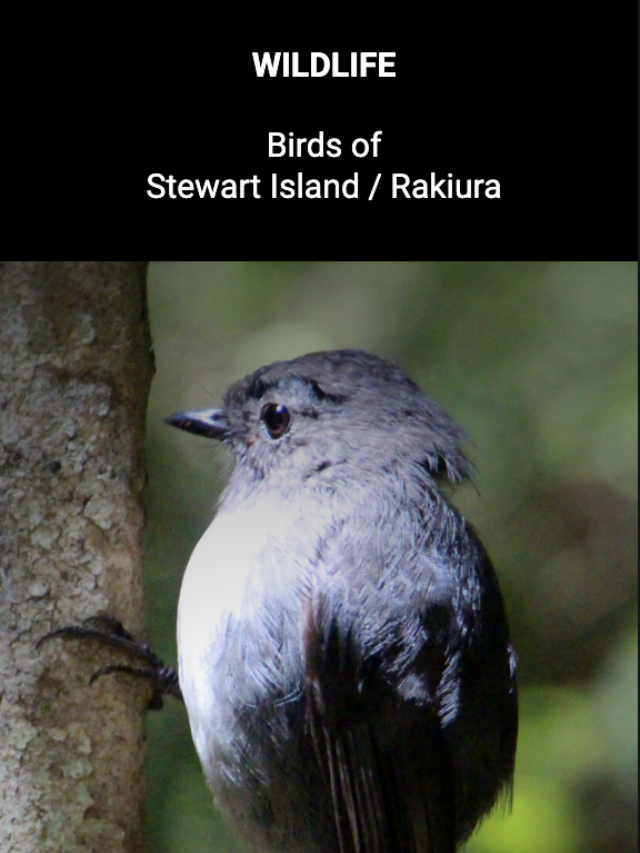
Birds of Stewart Island / Rakiura
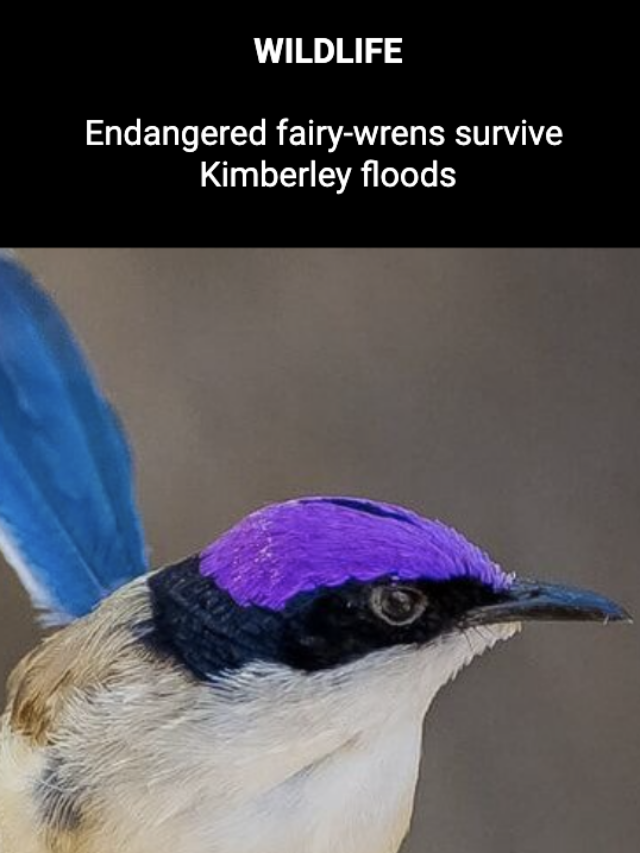
Endangered fairy-wrens survive Kimberley floods
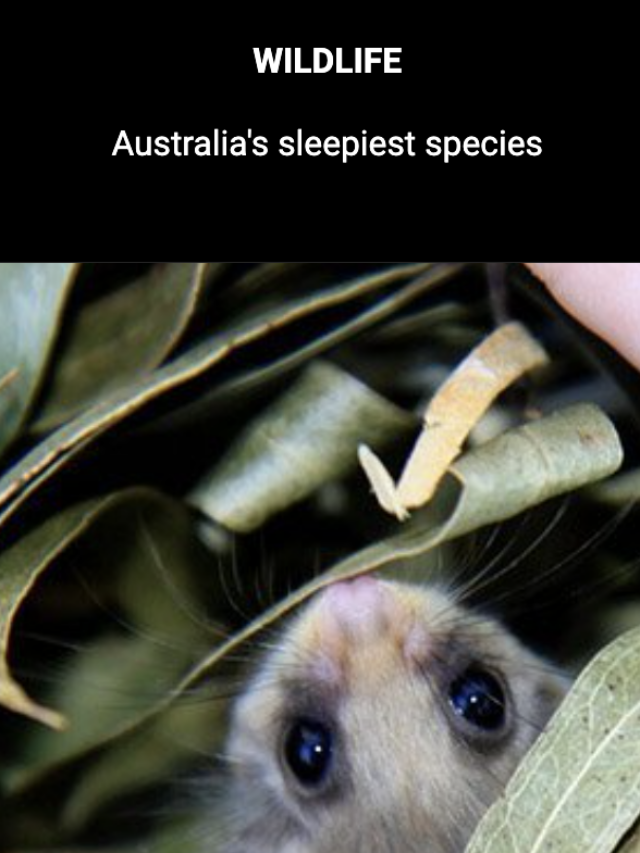
Australia’s sleepiest species

2024 Calendars & Diaries - OUT NOW
Our much loved calendars and diaries are now available for 2024. Adorn your walls with beautiful artworks year round. Order today.

In stock now: Hansa Soft Toys and Puppets
From cuddly companions to realistic native Australian wildlife, the range also includes puppets that move and feel like real animals.


Remembering The Beatles’ Australian visit 60 years later
I n 1964, Beatlemania had well and truly swept across the world for the four lads from Liverpool and Australia was no exception to this hysteria. The Beatles kicked off the year with a jam-packed schedule of touring, filming and recording – as well as a visit to Australia.
In June 1964, the Fab Four landed on the shores of Sydney to kick off a tour around the country. The Australian Women’s Weekly were one of the first publications on the ground to welcome The Beatles to the country and we were lucky enough to chat with the four lads – minus Ringo Starr, who was struck down with tonsillitis back in England. 60 years later, we’re looking back on how Beatlemania swept through the country off the back of their trip.
Read on for our exclusive chat with The Beatles all the way back in 1964…
The Event of the Yeah
Not even the torrential rain that fell like drum beats from the missing Ringo could wash the enthusiasm, colour, and craziness out of the ‘Event of the Yeah’.
The event was, of course, B-Day – the day last week that The Beatles invaded Sydney to begin their Australasian tour.
Later in the day, Beatle George Harrison aptly summed up the problems of footsore fans and Press people when he cracked to me: “We Come, we high C – but we don’t corn-cure!”
Although meeting The Beatles is a fascinating and instructive experience (they’re healthy, handsome young men; John’s wit is as sharp as a stiletto; Paul is a superb clown; George is rather shy but shrewd; Jimmy Nicol is quiet and pleasant), an equally colour-ful story was played out behind the scenes.
Here, in detail, are highlights of my day with The Beatles:
“I guess it just rained fewer ‘cats’ than watch dogs!” said Paul with a laugh.
I had told him that while police estimates of the airport reception ranged between 400 and 500 fans, watching the watchers were 50 Commonwealth police, 300 N.S.W. police (including overall-clad members of the Police Rescue Squad), and 100 or so newspaper and magazine reporters and photographers, TV and newsreel cameramen, and TV and radio commentators.
The small crowd, however, had upheld the honour of Beatle fans. As the plane taxied to a stop, the screams drowned out even the ear-piercing screech of the engines.
With time out for a seeming awestruck silence, the caterwauling resumed as The Beatles made a brief ”Royal Progress” under wind-buffeted umbrellas on a decorated truck past the barricaded fans.
This was the closest look at their idols, all together, that fans were to get all day. But the constant crowd who waited outside the Sheraton Hotel in Macleay Street, Potts Point, made
their own strange brand of ecstasy.
The boys made several appearances on the balcony of their eighth-floor penthouse, but in the long periods between, the fans in the street below screamed at anyone – or anything – moving on any of the hotel’s other floors.
I put on a woman reporter’s bulky astrakhan overcoat, brushed my hair down over my forehead, and stepped out on to the balcony of my suite beneath The Beatles’.
“Eek—there’s one!” someone shrieked, and a great roar went up!
Later Cynthia Lennon “arrived”! A rumour spread that a pretty blonde girl, wearing a John Lennon-type cap being admitted to the guarded penthouse, was the Beatle Bride.
Just before a Press conference, the mystery girl came down in the lift and walked past guards toward the conference room. “Are you Cynthia Lennon?” I asked. No; she is 19-year-old Marion Carter, of Coogee, a Beatles’ publicity girl.
As the boys walked past us into the room under escort, I called to John and asked him if Marion looked like Cynthia. He paused, looked carefully, grinned, and said: “Aye, quite a bit.”
The Mystery of the Missing Aunt Mimi had its moments, too. Aunt Mimi – Mrs. Mary Smith, John Lennon’s “mother” for most of his life – flew into Sydney in the Beatle plane.
In order to chase the stars into the city many of the Press missed Mrs. Smith at the airport and planned to interview her at the hotel. But later there was a problem: WAS Aunt Mimi at the hotel, or had she already flown (or did she plan to fly the same day) to New Zealand to stay with a cousin in Wellington?
Because of another hotel booking for a Smith, a desk clerk believed Aunt Mimi had not booked in. I found Aunt Mimi finally – resting in the suite directly above mine! She’d been there since soon after 8 a.m. and was not off to New Zealand till the next day.
A slim, soft-spoken widow for about nine years (her late husband was a farmer in the early days of their marriage), she told me how she had raised 23-year-old John since her sister died when he was three.
Her house at Woolton, six miles out of Liverpool, was his home until last August, when he, his wife, Cynthia, and their baby son moved into a place of their own.
She recalled that John’s first ambition had been for a career in commercial art. “But even though he has kept his interest and is an accomplished artist, music became more and more important.
“John, Richie (Ringo), Paul, and George first started playing together – music, I mean – when they were pals at 15 or so.
“They have often practised in my home – without amplifiers for their electric guitars, mind you!”
Photographer Don Cameron remarked that he played the electric-amplified guitar at home.
“Heaven help your mother, young man,” Aunt Mimi said coldly.
Aunt Mimi also talked about the other Beatles’ families: “I get on very well with the Starkeys (Ringo’s parents), the Harrisons (George’s), and Mr. McCartney (Paul’s father, a widower).
Aunt Mimi confessed she is lonely without John, Cynthia, and the baby around the house. “But John never forgets me. He made this trip possible, of course. He rang me up one day and said, ‘Mimi,’ he always calls me that, ‘how about coming to Australia with us?’
“I wondered at first – I don’t believe in interfering in his life – but he wouldn’t take ‘no’ for an answer. “So here we both are – 12,000 miles (isn’t it?) from Woolton.”
This article originally appeared in the June 1964 issue of The Australian Women’s Weekly and was written by Robin Adair.
The post Remembering The Beatles’ Australian visit 60 years later appeared first on The Australian Women's Weekly .

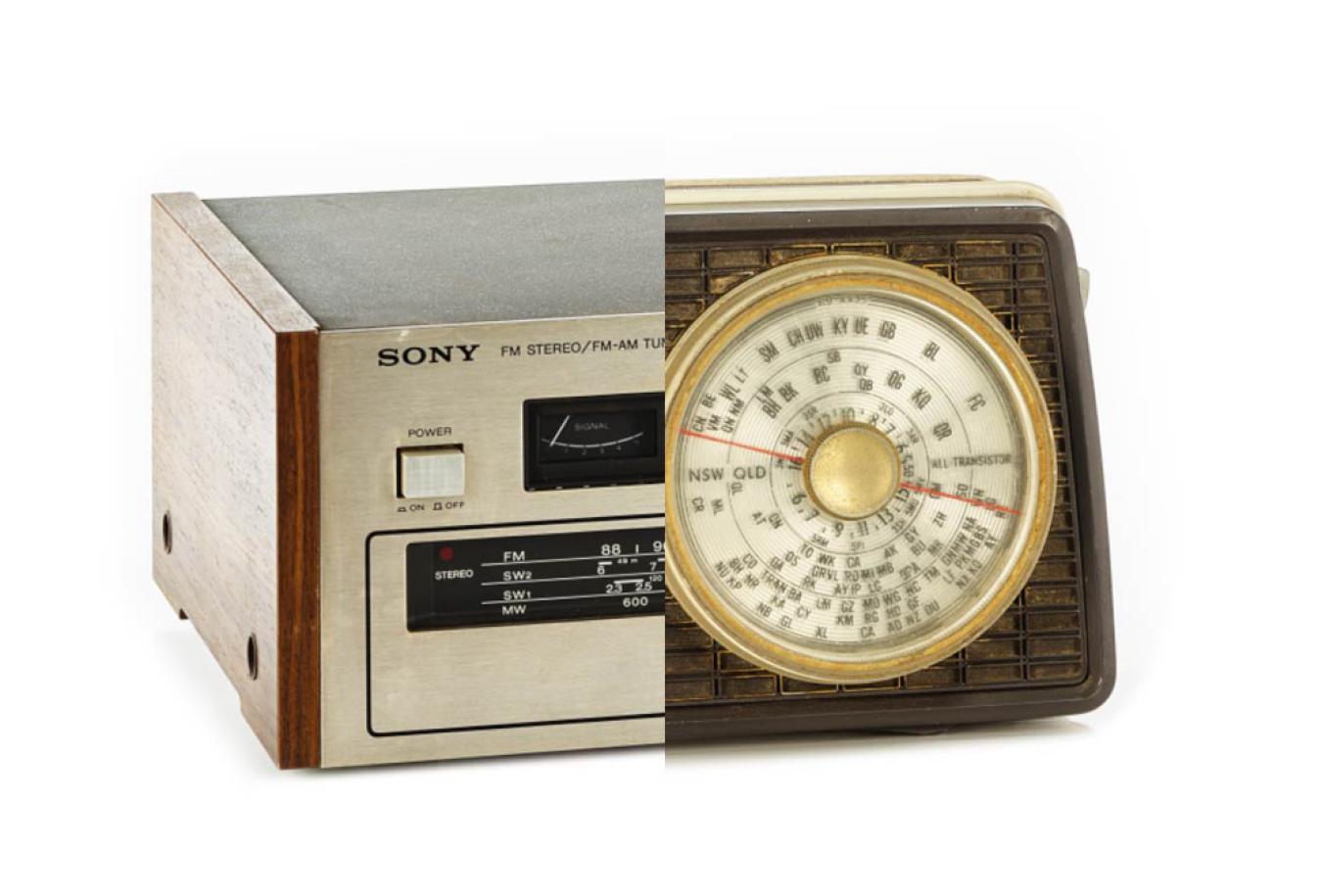
Plan your visit
Visit the NFSA Canberra
Our opening hours
Around the web
- Facebook Canberra
- YouTube NFSA
- YouTube NFSA Films
1800 067 274 Contact us
Email sign up
Never miss a moment. Stories, news and experiences celebrating Australia's audiovisual culture direct to your inbox.
Support us to grow, preserve and share our collection of more than 100 years of film, sound, broadcast and games by making a financial donation. If you’d like to donate an item to the collection, you can do so via our collection offer form.
The Beatles at Sydney Stadium, 1964

Request access
This newsreel features live footage of The Beatles and their fans during a concert in Sydney during their 1964 tour of Australia.
Concert footage of popular acts was still in its infancy in the 1960s. This professionally shot footage is the result of employing multiple cameras and stylish editing in post-production that effectively captures the phenomena known as 'Beatlemania'.
It's very effective in showing the band performing and perhaps more so in showing the reaction of the fans!
Parts of the clip appear to be sped-up because the frame rate has been adjusted by the filmmaker; whether or not this is deliberate is unknown. Studio recordings of several songs – which don't match the images – have been dubbed over the images, presumably because the sound that was captured live was predominantly screaming!
Despite this, it is an important recording of a significant era in popular culture. The scenes in this clip effectively serve to contextualise the pop culture phenomenon of Beatlemania.
The National Film and Sound Archive of Australia acknowledges Australia’s Aboriginal and Torres Strait Islander peoples as the Traditional Custodians of the land on which we work and live and gives respect to their Elders both past and present.
Enter the NFSA Our Statement of Reflection

- Public Notices
- Integrated Planning and Reporting
- Budget and Financial Sustainability
- Find your Ward
- Councillors
- Role of Councillors and the Mayor
- Lobbying Councillors
- Expenses and Facilities Policy
- Chairmen and Mayors of Woollahra
- Members of Parliament
- NSW Local Government elections 2024 and Constitutional Referendum
- Upcoming meetings calendar
- Agendas and Minutes
- Council meetings
- Planning panels
- Working parties and sub-committees
- Having your say at meetings
- Code of Meeting Practice
- Councillor Voting Register on planning matters
- Contact us online
- Getting to Council Chambers
- Make a claim
- Woollahra Council App
- Why work at Woollahra?
- Current Vacancies
- Recruitment and selection process
- Work experience and traineeships
- Frequently asked employment questions
- Equal Employment Opportunity (EEO)
- Workplace Health and Safety (WH&S)
- Child Safe Organisation
- Plans, policies and reports
- Library Public Technology Policy
- Council Resolution - 8-10 New McLean Street, Edgecliff
- Major Projects
- State Government Projects
- Community Engagement Projects
- Tenders, purchasing and expressions of interest (EOI)
- Register of Annual Disclosure of Pecuniary Interests
- Register of Council contracts
- Open Access Information not publicly available
- Donations and Sponsorship Register
- Public Safety CCTV in Double Bay Commercial Centre
- Data Breach Register
- Citizenship ceremonies
- Fees and charges
- Find your rubbish and scheduled clean up service dates
- Rubbish collection (red lid)
- Recycling collection (yellow lid)
- Organics collection (green lid)
- Additional collection services
- Scheduled clean-up service
- Disposal and re-use guide
- Recycle problem waste
- Skip bin providers
- Community initiatives and events
- Trade waste services
- Illegal dumping
- Private trees
- Public/Council owned trees
- Tree management for bushfire protection
- Trees and bats
- Trees and development work
- References, application forms and resources
- Resident Parking Permits
- Resident Visitor Parking Permits
- Responsible pet ownership
- Identification and registration
- Walking your dog
- Nuisance dogs
- Dog attacks
- Lost and found animals
- Choosing the purr-fect pet
- Dogs and kids safety
- Dead or injured animals
- Native animals and wildlife
- Stills photography
- Abandoned shopping trolleys
- Unattended and abandoned vehicles and items
- Graffiti removal
- Licensed premises - disturbance complaints
- Noise complaints
- Second-hand smoke
- Surveillance / security cameras, CCTV and drones
- Repairs and maintenance
- Infrastructure Asset Management
- Road opening permits
- Permit to stand plant
- Carry out works on public road including driveways
- Footway dining approval
- Parklet program
- Display of goods on footway
- Sale of Council land
- Leasing and licensing of Council controlled land
- Encroachments on Council road reserves
- Street lights
- The Bay Room
- Canonbury Cottage
- Cooper Park Community Hall
- The Cultural Hub
- The Studio at The Drill Hall
- EJ Ward Paddington Community Centre
- Rose Bay Cottage
- Sherbrooke Hall
- Vaucluse Bowling Club
- Grants & business support
- Business news & events
- Government tenders and procurement
- Starting a new business
- Woollahra economic data
- Sustainable business
- Contacts & resources
- Online payments
- Conveyancing certificates
- Change mailing address
- Street address numbering
- Road signs and linemarking
- Driveway linemarking
- Road closures, street parties and special events
- Works Zones (Construction Zones)
- Public transport
- Cycling and bike share
- Road Safety
- Coastal Inundation
- About building and development in Woollahra
- Contributions and VPA’s
- Environment and BASIX
- Exempt and complying development
- Heritage conservation
- Hierarchy of development rules
- Planning principles
- Requests for planning proposals
- Residential apartment development
- Object or comment on a DA
- Disclosure statements
- DA process overview
- Track or find a DA
- Prepare your application
- Avoid assessment delays
- Developments over $750,000
- Submitting 3D digital models
- Pre-DA consultation service
- Lodge your application
- About Development Applications
- Initial review
- Expert referrals
- Advertising and notification period
- Notification of DAs (Notice of proposed development)
- 3D modelling portal
- How are DAs determined
- Approved and refused DAs
- Register of exceptions to development standards
- Litigation protocol policy
- Construction certificates
- Principal certifiers and Council
- Builders - What you need to know
- Environmental protection tips
- Resolving complaints about building works
- Unauthorised building work and uses
- Asbestos Safety
- Fire Safety
- Private swimming pools and spas
- Window and balcony safety
- Library Catalogue/Login
- Book a Space
- Printing and photocopying
- Justice of the Peace service
- Inter library loans
- Request an item
- Frequently Asked Questions (FAQs)
- Library app
- Paddington Library - sparking curiosity for 130 years
- Discovering and Rediscovering Woollahra
- World War 1 Remembered
- World War 2 Remembered
- A brief history of Woollahra
- Council history
- External resources
- Family history
- Local areas
- Local history fast facts
- Oral history
- Searching your property
- Women in Woollahra
- Woollahra's historic landscapes
- Council records
- Digital Events
- eBooks and eAudiobooks
- eMagazines and eNewspapers
- Kids' Space
- Online information and databases
- Learn a language
- Advice for Readers
- Magazines and newspapers
- Community languages
- Library of Things
- Children's Services
- Youth Services
- Home Library Service
- Lifelong Learning
- Technology Help
- Events for Everyone
- Adult Workshops
- Talks and Conversations
- Writer Development
- Cultural Events
- Business Programming
- Technology Workshops
- Children 0-5 Years
- Children 5-12 years
- School Holidays
- Youth events
- Events for Seniors
Nominate a person or event
- Alan Falconer Kippax
- Alan Stuart Morris
- Bombardment 1942
- Captain John Piper
- Captain William John Dumaresq
- Christina Stead
- Dame Joan Sutherland OM AC DBE
- Dr Elwyn Lynn AM
- Dr Max Herz
- Edward Knox Harkness and Walter Scott Harkness
- Edward Albert 'Douglas' Watson
- Eleanor (Nellie) Stewart
- Elizabeth Macarthur
- First Seaplane flight over Sydney
- Frederic Lassetter
- Herbert Henry (Dally) Messenger
- James Francis (Frank) Hurley
- Jeff Freeman
- Jessie, Lady Street
- John Fairfax
- John Peter Russell
- Margaret Olley AC
- Michael Guilfoyle
- Montague Alfred (Monty) Noble
- Sir Percival Halse Rogers
- Peter Sculthorpe
- Robert Cornelius Joyner
- Rudy Komon MBE
- Shay Docking
- Sir Daniel Cooper
- Sir John Hay
- Sir John Robertson
- Sir Alexander MacCormick KCMG
The Beatles Concerts at the Sydney Stadium, June 1964
- Thomas Sutcliffe Mort
- William Warrell
- Wintergarden Theatre
- World Heavyweight Boxing Championship Title Fight 1908
- Karoo - Cora Gooseberry
- Sir Mark Sheldon KBE
- James (Jim) Charles Bancks 1889 - 1952
- Sir Mungo William MacCallum KCMG 1854 - 1942
- Gisella Scheinberg OAM
- Library Volunteering
- Newsletters
- Produce an Event
- Conditions of Entry
- Digital Literary Awards - Frequently Asked Questions
- Past winners of the Woollahra Digital Literary Award
- 2023 Digital Literary Awards Ceremony
- Children and families
- Disability Inclusion
- Domestic, Family & Sexual Violence
- Homelessness
- Mental health and suicide prevention
- New residents
- #RacismNotWelcome
- Art Gallery
- Author Talks
- Woollahra Creative Hoardings Program
- Digital Art and Culture
- Library artwork commissions
- Pop Up Posters Paddington
- Reconciliation
- Tell your story - local voices
- Up the Wall Mural Project
- Walking Tours - DIY Arts and Culture
- Woollahra Small Sculpture Prize
- Youth Photographic Award & Short Film Prize
- Bush Tucker Walks
- Festival of Fun New Experiences
- NAIDOC Week
- International Women's Day
- Woollahra Garden Awards
- Community engagement
- Hall and venue hire
- Hire a park
- Hire a sports ground
- Strategic plans
- Jumpstart Program
- Resources and toolkits
- Community plans, studies and liaison groups
- History and heritage
- Population and economic profile
- Our approach to community building
- Accessibility
- Our climate change action
- Switch to GreenPower
- Go electric
- Sustainability stories - all electric home and rental
- Solar Panels and Your Home
- Solar My Suburb
- Apartment and Strata Energy Savings
- Keeping cool this summer
- Our water quality projects
- Harbour water quality
- Save water at home
- Report water pollution
- Floodplain management
- Water restrictions
- Our water saving projects
- Threatened Species
- Native gardening
- Weeds and Invasive Species
- Bushcare volunteering
- Report a wildlife sighting
- Stories of local biodiversity
- Walk a nature trail
- National Tree Day
- Our bushland projects
- Upcoming events
- Environmental Grants
- Sustainable schools
- HarbourCare
- Get involved
- Our Action Plan
- Electric vehicle charging stations
- Walks in Woollahra
- Get Involved
- Our Projects
- Water craft storage
- Location of dinghy storage facilities
- Dinghy storage hire waiting list
- Community gardens
- Exercise equipment in parks
- Commercial fitness training
- Marquees and amusement devices
- School picnics
- FAQs for social events park hire
- Harbourside pools and baths
- Smoke free zones in Woollahra
- Sports ground closures and wet weather
- Seasonal hirers
- Tennis courts
- Gap Park Historic Tramway Trail
- Art and Culture Walks
- Bondi To Manly Walk
- Harbour Walk - Rushcutters Bay to Rose Bay
- Harbour Walk - Rose Bay to Watsons Bay
- Coast Walk - Christison Park to Inner South Head
- Other venues in Woollahra
- FAQs for weddings and ceremonies park hire
- Open Space & Recreation Strategies and Plans Of Management
- Latest news
- Council newsletters
- Media contacts
- Have Your Say
- Local event calendar
- What's On Woollahra Booklet
- Plan and promote an event
Plaque location
Plaque unveiling, the beatles concerts at the sydney stadium 18-20 june 1964, the fab four, the sydney stadium, 'the old tin shed', corner new south head road and neild avenue.
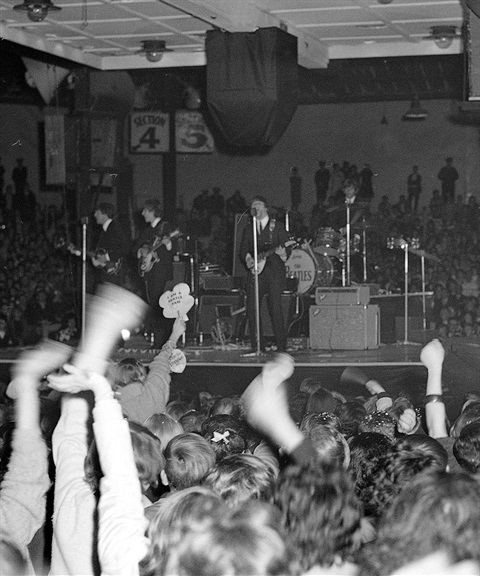
Between 18-20 June 1964, ‘Beatlemania’ arrived in Sydney. The Beatles performed six concerts at the Sydney Stadium, Rushcutters Bay as part of a two week tour of Australia and New Zealand. The tour was a major event for Australia - a link to the international culture of the 1960s, and a ‘once in a lifetime celebration of youthful rebellion’ for thousands of Sydneysiders.
Corner of Neild Avenue and New South Head Road, Paddington
View all plaques in Paddington
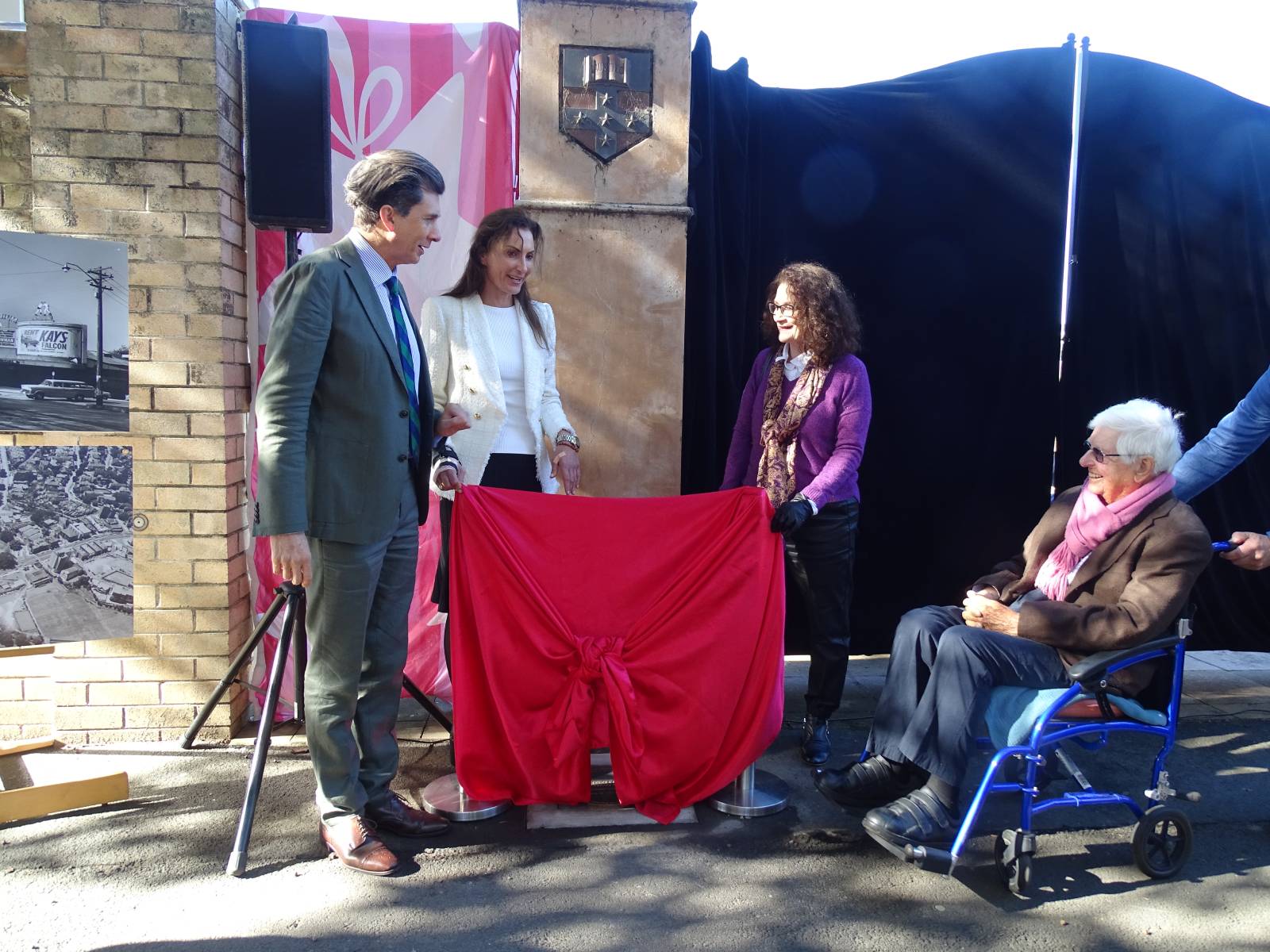
Plaque unveiling for The Beatles Concerts at the Sydney Stadium in June 1964. L-R Cr Anthony Marano, Mayor of Woollahra Cr Susan Wynne, guest speaker Dr Janis Lander, guest Bob Rogers OAM.
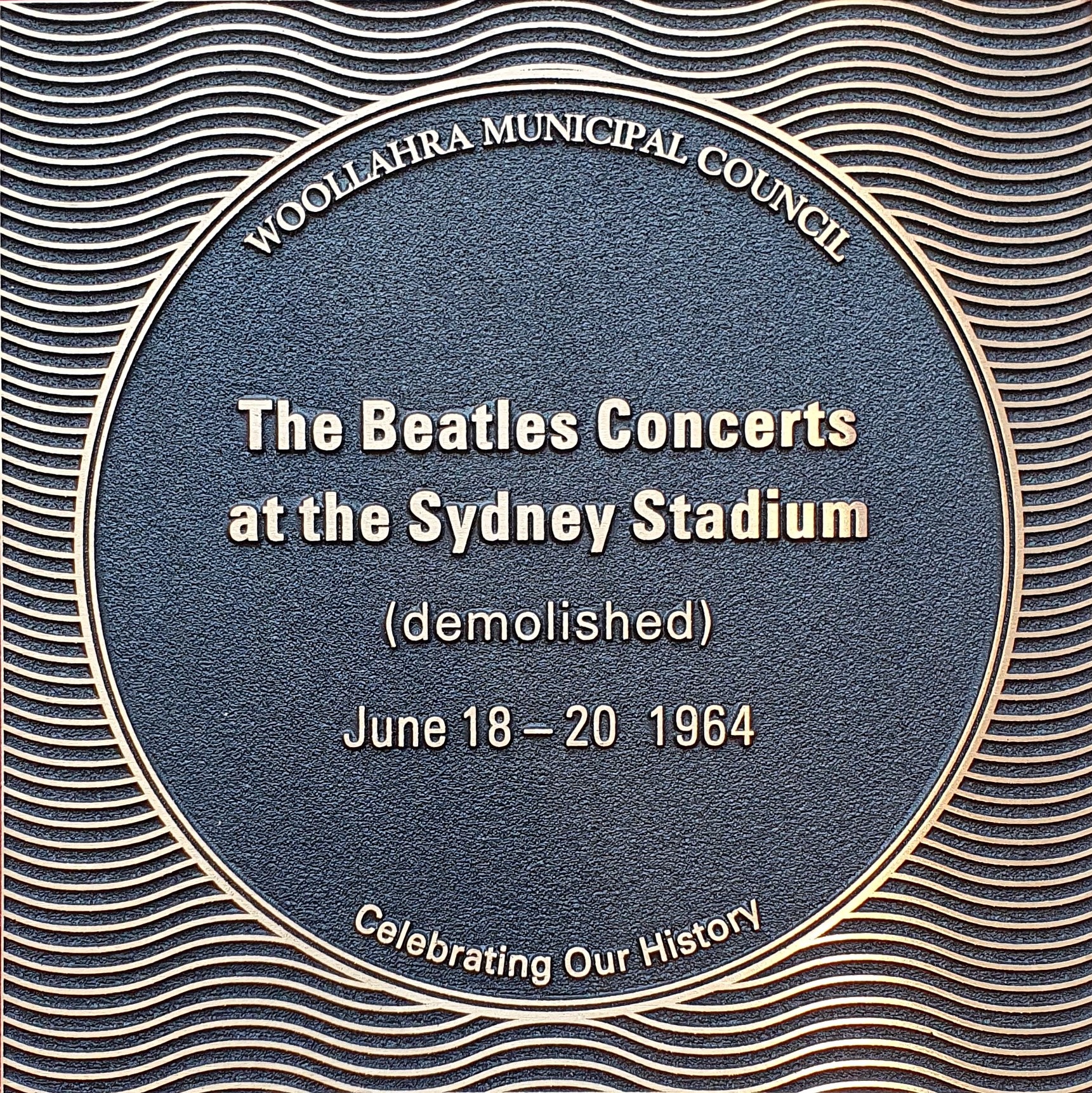
On 16 June 2021, a plaque commemorating The Beatles 1964 concerts in Sydney was unveiled near the site of the Sydney Stadium (demolished), the venue for the concerts on 18-20 June 1964.
The plaque is located on the footpath on Neild Avenue, near the corner of New South Head Road, Rushcutters Bay.
Watch the plaque unveiling here
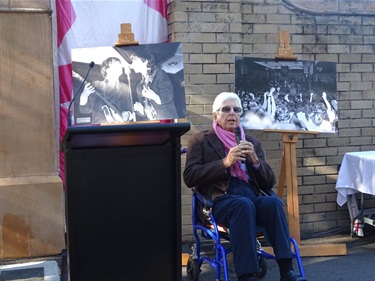
DJ and radio broadcaster Bob Rogers OAM, who toured with the Beatles in 1964, speaking at the event
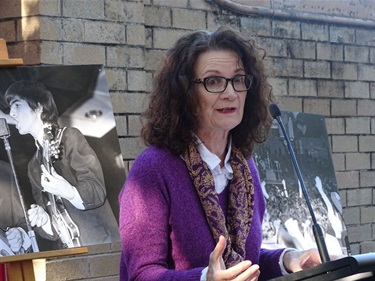
Guest speaker Dr Janis Lander
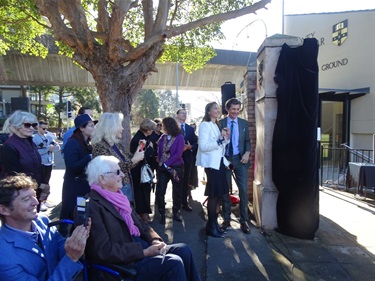
Guests at the plaque unveiling for The Beatles Concerts at the Sydney Stadium in June 1964
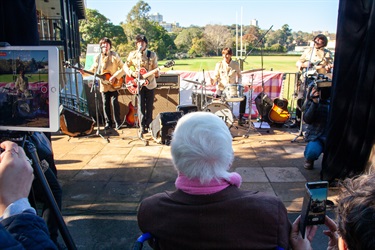
Guests watching the Beatles tribute band 'Beatle Magic'
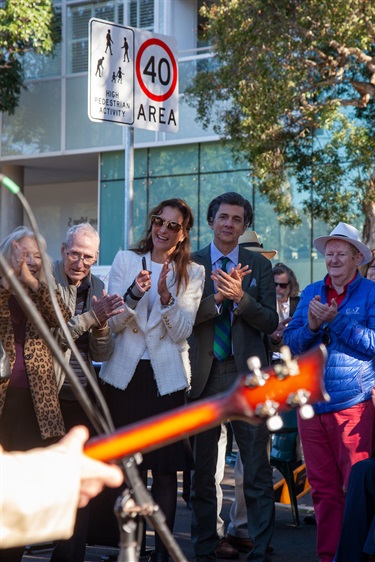
Guests with Mayor of Woollahra Cr Susan Wynne (centre), Cr Anthony Marano and Cr Peter Kavanagh
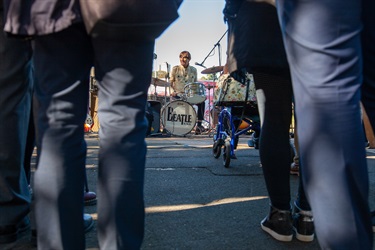
Tribute Band 'Beatle Magic' playing at the event
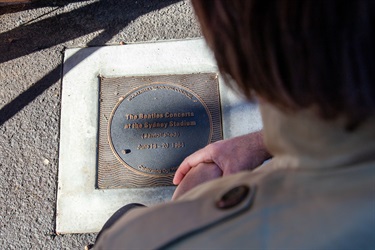
Plaque unveiling for The Beatles Concerts at the Sydney Stadium
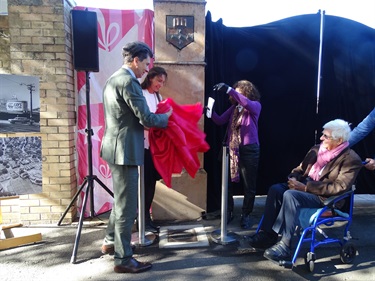
L-R Cr Anthony Marano, Mayor of Woollahra Cr Susan Wynne, guest speaker Dr Janis Lander, guest Bob Rogers OAM
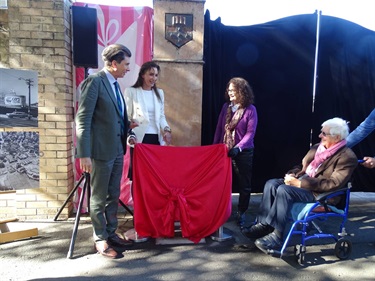
Guest Sheridan Rogers
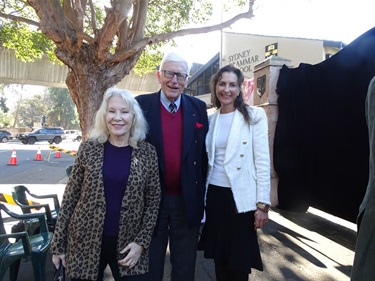
Guests with Mayor of Woollahra Cr. Susan Wynne
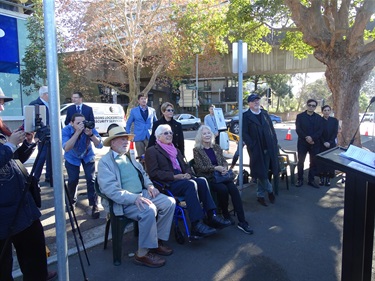
Guests at the plaque unveiling
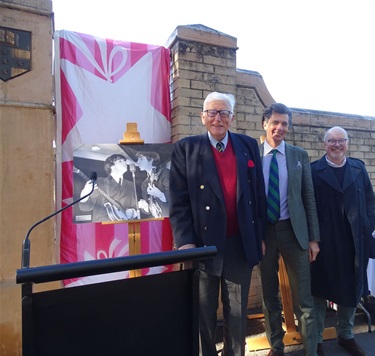
L-R Chris Dawson, Cr. Anthony Marano, Graham Humphrey
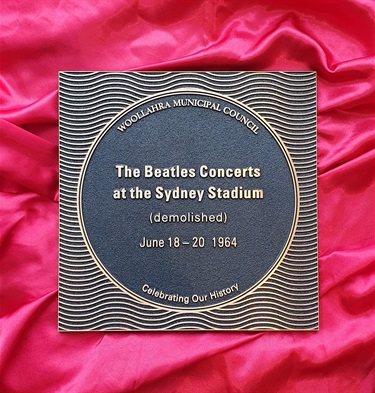
Plaque for The Beatles Concerts at the Sydney Stadium in June 1964
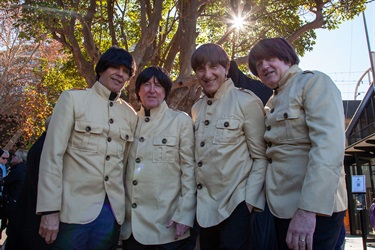
Tribute band 'Beatle Magic' who performed at the event
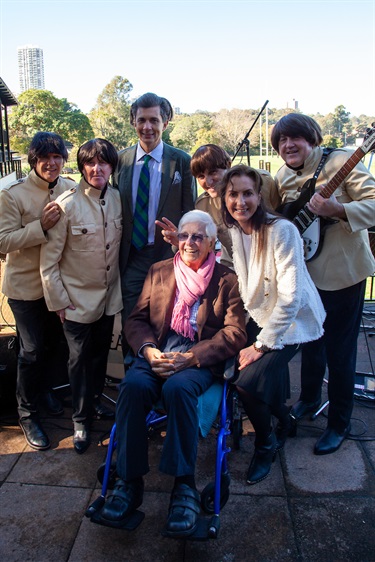
Members of the band 'Beatle Magic' with Cr Anthony Marano, Mayor of Woollahra Cr Susan Wynne and Bob Rogers OAM (centre)
In June 1964, 'Beatlemania’ arrived in Sydney. The Beatles performed six concerts at the Sydney Stadium i , Rushcutters Bay as part of a two week tour of Australia and New Zealand.
For all the charisma the four emitted, the real stars of the tour were the hundreds of thousands of ordinary people who screamed in public and viewed in private who were caught up by accident or intent in the joyful madness that swept the land... Glenn A. Baker, The Beatles down under : the 1964 Australia and New Zealand tour , p. 7
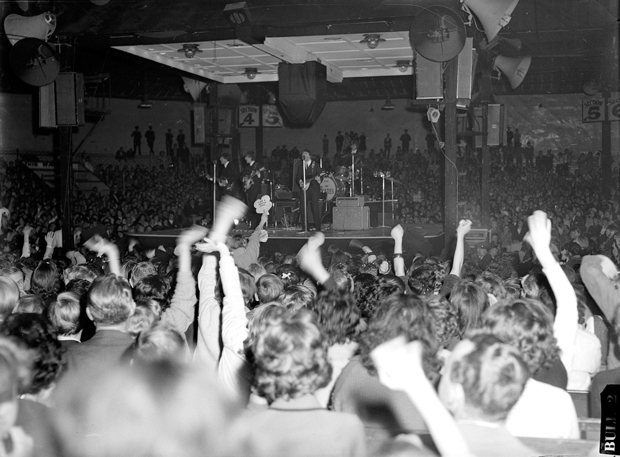
‘Beatlemania’
In 1963, the British Press coined the term ‘Beatlemania’, describing
the relentless and seemingly hysterical response of that country’s teenagers to an indeterminate mixture of musical presence, public personality, and social significance that was projected by this pop group from the port city of Liverpool, whose fresh-faced exuberance and insouciant wit had endeared them to a substantial number of adult Britons as well Jonathan Gould, Can't buy me love: the Beatles, Britain, and America , p. 1
The first Beatles single to be released in Australia was Please Please Me , issued on February 21, 1963 by EMI Records. The song was the second UK chart hit for the Beatles, making No. 2, but did not have the same success in Australia, the Beatles having been treated with a degree of indifference by the ‘painfully conservative Australian media and entertainment industry’. ii
This all changed in 1964, ‘the year that the 'Fab Four' took their potent aura to the world’. iii By then, the Beatles had notched up three UK No. 1 hits - From Me to You , She Loves You and I Want to Hold Your Hand .
In February 1964 a Pan American Airways jetliner at Kennedy Airport delivered the group to New York, beginning the Beatles' so-called ‘conquest’ of America, with a tour of the East Coast. They appeared twice on the Ed Sullivan Show, performing at the Washington Coliseum and Carnegie Hall in New York. Capitol Records had spent $50,000 promoting the group.
Filming for the movie A Hard Days Night began in the UK just 9 days after the Beatles return from the US. By this time, seven of Australia’s ‘top 40’ records were Beatles numbers - She Loves You stayed on the Australian charts for 42 weeks.
In June 1964, following a series of concerts in Holland and Denmark, the Beatles undertook a ‘Far Eastern Tour’, flying first to Hong Kong, ahead of two weeks of engagements in Australia and New Zealand.
Australia – 1964
"It all started on June 11 with a scheduled flight from Hong Kong’s Kai Tak that refuelled in Darwin where Australia witnessed the first manifestation of Beatlemania; at 2.35 on a winter’s morning 400 fans crowded the little terminal to see John Lennon, Paul McCartney, George Harrison and stand-in drummer Jimmy Nicol pass through Customs and Immigration". iv
‘Beatlemania’ had arrived ‘down under’ - it was the only time the Beatles would tour Australia. Author Jonathan Gould commented that "of all the tumultuous public receptions the group would experience, nothing before or after, in terms of scale, would compare with what awaited them in Australia". v
Incoming passenger cards record the arrival of the Beatles in Darwin on 11 June 1964, on BOAC Flight 801, listing their occupations as ‘Musician’ and length of stay 10 days. vi The Beatles’ onward flight touched down at Sydney’s Mascot airport just before 7:45am on Thursday 11 June 1964. Australian television, which was just eight years old, broadcast the event live to hundreds of thousands of viewers who watched the Beatles being ferried to the terminal on the back of a truck, in wind and drenching rain. vii
While in Sydney, The Beatles stayed at the Sheraton Hotel, Potts Point (40 Macleay Street, now apartments), taking over the top floor. The New York City Police department had given a warning to Australia, advising that ‘there will be chaos and confusion’ wherever the Beatles go. Hong Kong’s police chief had confidentially advised Sydney CIB that supporters (particularly young girls) would besiege their hotels, but that the Beatles themselves were amiable, and would ‘co-operate with police in the preservation of law and order’, spending most of the time, when not performing, in their hotel suites. viii
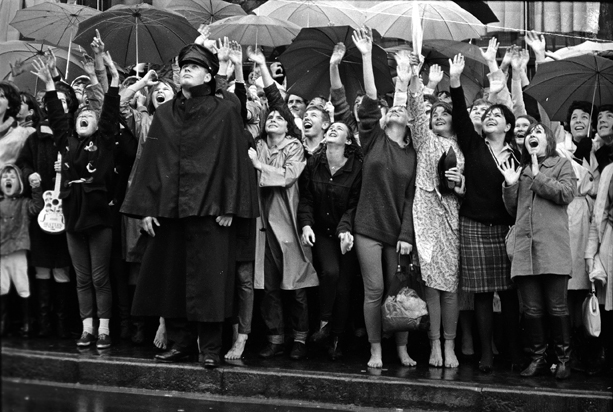
The Beatles' tour caused consternation among Australian police, aviation officials, hotel owners, parents and schools. Four of Sydney’s leading hotels (the Menzies, Chevron, Hotel Australia and Town House) had refused to book the Beatles. Eventually the owner of the small Sheraton Hotel in Macleay Street, Potts Point, offered to have them – it was a decision that would provide the hotel with free publicity for years to come. The Chevron manager wryly noted that they had originally refused the booking because of the expected crowds inside and outside the hotel - they got them anyway, but without the money or publicity, fans taking up vantage points outside the Chevron, hoping for a glimpse of the Beatles in the Sheraton Hotel opposite.
A polarisation of opinion regarding the presence of the Beatles was made obvious in the reaction of two Sydney girls schools. Miss P. Evans, headmistress of Ravenswood Methodist School banned students from having Beatles haircuts or carrying photos, stating that ‘We don’t want Ravenswood to be involved with those screaming mobs. I want to safeguard these children from something they do not understand’. On the other hand, Miss Betty Archdale, the indomitable principal of Abbotsleigh School for Girls at Wahroonga took a more enlightened view, allowing the girls to pin photos of the Beatles on their dormitory walls, and to watch the Beatles on TV, saying ‘I see no harm in the Beatles or the craze they have started’. ix
The first of the Beatles' twenty Australian shows was in Adelaide, followed by Melbourne, Sydney and finally Brisbane. The concerts usually consisted of a ten-song, half-hour set, performed to screaming audiences and padded out by four support acts. The show was compered by Alan Field, with performances in the first half by The Phantoms, who stayed on to back Johnny Devlin and Johnny Chester – the first half closed with Sounds Incorporated and the Beatles played the whole of the second half. There were two shows each night, one at 6pm and one at 8pm, and none on Sundays. Between the Sydney and Brisbane concerts there was an eight-day tour of New Zealand. x
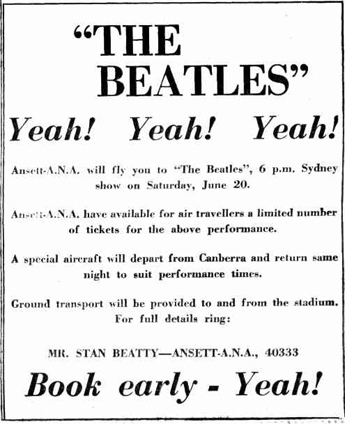
“No single instance of Beatlemania throughout the globe ever came close to the intensity and sheer magnitude of the social upheaval which accompanied the 1964 Australian Beatles’ tour” Glenn A. Baker, The Beatles down under , p. 7
The concerts - Sydney Stadium
Between 18-20 June 1964, The Beatles performed six concerts at the Sydney Stadium, Rushcutters Bay. Ticket prices ranged from 15s 6d to £1 17s 6d. xi
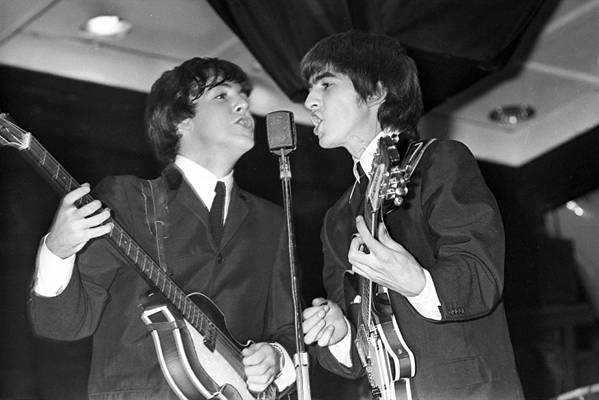
Unlike the reception in Adelaide, where a large portion of the population had turned out, the initial response when the Beatles returned to Sydney was muted, with a relatively quiet crowd at the airport. Melbourne too had seen fairly chaotic scenes, with the Victorian police calling in the army and navy to assist.
The Beatles had by this time been reunited with their drummer, Ringo Starr, who had missed the first part of the tour due to a bad bout of tonsillitis, re-joining the Beatles in Melbourne. Stand-in drummer Jimmy Nicol quietly left Australia before the group returned to Sydney.
The first two Sydney concerts, on Thursday 18 June 1964, were only three quarters full. Promoter Kenn Brodziak was reported as saying “To this day, I’m not really sure why this happened. I tend to think that the sort of hysterical coverage which the Sydney press liked to run, frightened a lot of parents who thought there would be some kind of wild riot”. Following the first shows, when it was clear that no one would be trampled to death, the remaining four shows were packed. xii
A three minute newsreel in the National Film and Sound Archive (NFSA) features live footage of The Beatles and their fans during a concert in Sydney during their 1964 tour of Australia: The Beatles at Sydney Stadium, 1964 . The curator notes that ‘Concert footage of popular acts was still in its infancy in the 1960s’ and ‘This professionally shot footage is the result of employing multiple cameras and stylish editing in post-production that effectively captures the phenomenon known as 'Beatlemania'’.
Terry Smith, Sports Journalist, devotes a chapter to ‘Beatlemania’ in his book The old tin shed , a history of the Sydney Stadium. He attended the first Beatles concert in Sydney - tickets being one of the perks of being the Sydney Morning Herald ’s boxing writer:
‘None of us who packed into the Stadium for the first Sydney concert…will ever forget it. Onto the revolving stage trotted The Beatles through a phalanx of uniformed police and security men’…‘It was absolute bedlam. The screams hit the tin roof and echoed round the stadium to create a noise level claimed by a sound expert to exceed that of a Boeing 707 jet in full flight’.
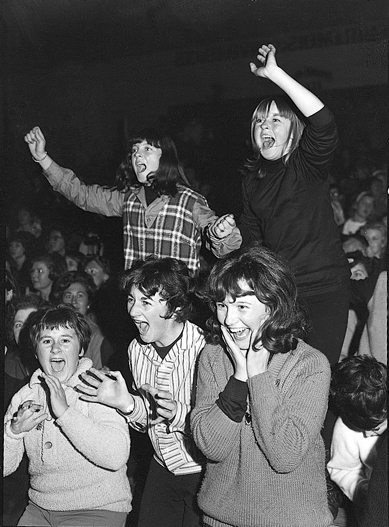
Annette Dixon, who was thirteen years old when she attended one of the concerts at the Sydney Stadium in 1964, shared her reminisences of the event:
I saw The Beatles then [in 1964]. My mum saved money to buy my ticket and our neighbour did the same for their daughter Sandra Hanmer. Her elder sister took us. We sat in what was called “the bleachers” … we screamed with everyone else - then we followed the crowd up to their [The Beatles] hotel Sheraton. They came out onto the roof of their hotel and threw a bucket of water out into the crowd. We gladly got wet. So, so long ago for us two 13 year olds. Annette Dixon
Newspaper reports of the Sydney concerts ranged ‘from the puerile to the refreshingly serious’. xiii Craig McGregor, of the Sydney Morning Herald , gave the ‘sole serious appraisal of the performance’ writing:
“The Beatles showed themselves last night to be every bit as polished, as exciting and engaging in person as they are on records – and what is more surprising a great deal gentler. This quality is somewhat unexpected in a Liverpool beat band whose music is raucous R&B, only slightly mellowed by a native English interest in harmony and musical colour …It was unexpected to find them singing numbers like ‘All My Loving’ and ‘I Saw Her Standing There’ with such warmth and romanticism…Yet the Beatles were, without a doubt the wildest, swingiest and ravingest quartet of pop musicians to hit the stadium since Little Richard.”
Most other reporters focused on the noise and hysteria of the fans. Ron Ford, of the Sun , had reported:
“It hit the tin roof of the Stadium and thundered round the empty bleachers: She was Just Sev! En! Teen!. The first real live Beatle sound in Sydney. And that’s all they got out before the shrieks took over for thirty minutes solid. It was hard to believe that these four frail and largely lifeless looking lads could whip up such a scene. Round and round went the baffled Beatles [ a reference to the Stadium’s revolving stage ] with a ‘stop the stage I want to get off’ look on their faces.”
After the final two concerts the Sunday Telegraph reported that “Screaming teenagers last night turned the Beatles’ last two concerts into near riot” and the Sun-Herald noted that “Thousands of girls under sixteen who occupied the most expensive seats seem to be in a state of delirium …”
All three Sunday newspapers carried extensive reviews of the fifth and sixth concerts on Saturday night – the first to have ‘house-full’ signs up before the headliners hit the stage. The late show was the balltearer of the tour and even the out of touch reviewers managed to realise it .. Glenn A. Baker, The Beatles down under , p. 101
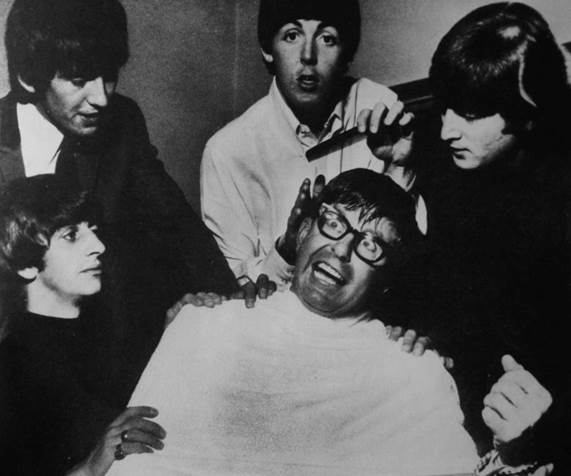
“From the beginning there were several attributes that distinguished the Beatles from anything that had happened in popular music before. The first was their nationality. Since the term had been first coined in the 1920s, the very concept of a ‘superstar’ had become synonymous with celebrity entertainment culture of the US. The Beatles in 1964 were the first unmistakably non-American performers to achieve the status of superstars on an international scale ..spearheading a British invasion of the American music scene. Jonathan Gould, Can't buy me love , p. 9
The Beatles grew up in Liverpool, one of the British seaports serving North America, which picked up the new rhythm and blues releases from sailors before the rest of Britain caught on.
In all but name, the Beatles began with the friendship of John Lennon and Paul McCartney who met in July 1957 at a garden fete at St Peter’s Church, Woolton. xiv John Lennon’s band, the Quarrymen, played a mix of rock & roll and skiffle, which had jazz, blues and folk influences. Shortly afterwards Paul McCartney joined the band as rhythm guitarist. By the summer of 1958, the nucleus of the future Beatles, - Lennon, McCartney and Harrison – was formed …not so much a band as a small circle of musical friends xv , including John’s friend Stuart Sutcliffe. They adopted the name the Beatles in August 1960, recruiting drummer Pete Best before a series of engagements in Hamburg. Stuart Sutcliffe left the Beatles in 1961 to pursue a career in art and Ringo Starr replaced Pete Best in August 1962, completing the line-up most usually associated with the Beatles – John, Paul, George and Ringo.
In November 1961, Brian Epstein heard the Beatles play at the Cavern Club in Liverpool, and was immediately taken with them. Over the next few months he courted the group, becoming their manager in 1962.
“The years of [the Beatles] story coincided with a period of rampant social and cultural change in Britain and America, and throughout the industrialised world” … ‘it culminated during the 1960s with the emergence of London as a world capital of pop culture, ruled by an unruly elite of ‘war babies’ who were bent on taking their country’s new climate of expressive freedom to once unimaginable extremes. The Beatles began as creatures of this new social and cultural milieu; they wound up serving as the most prominent symbols of it for people all over the world”. Jonathan Gould, Can't buy me love , p. 14
In 1965 the British Prime Minister’s office, under newly elected Douglas Wilson, a fellow northerner, announced that the Beatles were to be appointed as Member of the Order of the British Empire (MBE). Surprisingly, the award cited their contribution to commerce, not the arts, with some estimates putting the Beatles records sales at more than 150 million records worldwide by August 1965 xvi . A growth in Britain’s fashion, entertainment and tourism industries was also attributed to a rising ‘pop Anglophilia’ in the US, Europe and Asia.
The Beatles were inducted into the Rock and Roll Hall of Fame in 1988 by Mick Jagger. xvii
John Winston Lennon MBE - 9 October 1940 – 8 December 1980
John Winston Lennon gained worldwide recognition as the founder, co-lead vocalist, and rhythm guitarist for the Beatles - his songwriting partnership with fellow Beatle Paul McCartney recognized as one of the most successful in the industry.
In 1969, he started the Plastic Ono Band with his second wife, Yoko Ono. After the Beatles disbanded in 1970, Lennon continued with a solo career releasing the album Imagine . ‘Following the release of Imagine , Lennon’s nonmusical activities and personal life tended to overshadow his career as a recording artist’ - John Lennon and Yoko Ono moved to New York city in 1971 where they ‘immersed themselves in various left-wing political causes’ xviii , and were critical of US involvement in the Vietnam War, creating issues with John’s residency visa in 1973. Following the birth of his son Sean in 1975, John Lennon withdrew from the public and devoted the rest of the 1970s to his family.
Along with the other Beatles, John Lennon was appointed a Member of the Order of the British Empire (MBE) in 1965, but returned his medal in November 1969, with an accompanying letter stating: ‘I am returning this MBE in protest against Britain's involvement in the Nigeria-Biafra thing, against our support of America in Vietnam and against Cold Turkey slipping down the charts.’
John Lennon was tragically shot and killed outside his Manhattan apartment building in 1980 by a Beatles fan. He was inducted into the Rock and Roll Hall of Fame (posthumously) as member of the Beatles in 1988, and as a solo artist in 1994.
Paul McCartney (Sir James Paul McCartney CH MBE) 18 June 1942 -
Paul McCartney gained his initial international fame as co-lead vocalist and bass guitar player for the Beatles. Born in Liverpool, he attended the Liverpool Institute High School (a grammar school), where he befriended George Harrison. Paul McCartney’s songwriting partnership with John Lennon produced a large portion of the Beatles catalogue – both wrote lyrics as well as music – but many other well-known hits are credited to Paul McCartney, including: And I Love Her (1964), Yesterday (1965), Eleanor Rigby (1966) and Blackbird (1968). After the Beatles disbanded in 1970, Paul McCartney pursued a solo career, forming the band Wings with his first wife, Linda, and Denny Laine (formerly of the Moody Blues) – the group achieved a number of hit singles and albums during the 1970s – including Mull of Kintyre , a record selling single released in 1977. Since the 1980s he has toured and performed as a solo artist. Paul McCartney’s interests beyond music include a commitment to a number of international causes and charities including animal rights and vegetarianism.
In an essay for the Rock and Roll Hall of Fame - Paul McCartney was inducted as a solo artist in 1999 – teacher, journalist and music critic for the New York Times , Allan Kozinn, says of Paul McCartney:
“The fact is, his salient feature as an artist is not, as some might assert, the ability to spin out a melody at the drop of a hat. What really drives him, as both composer and performer, is an unquenchable musical curiosity and the urge to constantly create.’ ‘He could, of course, leave the public stage secure in the knowledge that his existing work will continue to thrill people in great numbers, and with his place in musical history assured many times over. But for someone with McCartney’s creativity and drive, stopping would be incomprehensibly out of character” . xix
Paul McCartney received a knighthood in 1997 for services to music in the British and in the 2018 Queen’s Birthday Honours list he was awarded a Companion of Honour (CH) for his ‘lasting contribution to music in the UK and Worldwide’ xx .
George Harrison MBE 25 February 1943 - 29 November 2001
George Harrison was born on 25 February 1943 in the family home in Wavertree, Liverpool. He joined the Beatles in 1958, and was only 17 when the group went to Hamburg in 1960, achieving international fame as the lead guitarist for the Beatles. By 1965 George Harrison had developed an interest in folk rock, including the music of Bob Dylan and the Byrds, and Indian Classical music – these influences can be found in some of the Beatles later work such as Norwegian Wood , in which he used the sitar. Although the majority of the band’s songs were Lennon- McCartney compositions, George Harrison was also a songwriter – his work included well known Beatles songs such as While My Guitar Gently Weeps and Here Comes the Sun.
After the band broke up in 1970, Harrison released a triple album All Things Must Pass , which contained the hit single My Sweet Lord. He also organised a 1971 Concert for Bangladesh with Indian musician Ravi Shankar, and founded Dark Horse Records in 1974. George Harrison continued to perform as a guest guitarist and collaborated with Bob Dylan, Eric Clapton, Ringo Starr and others.
George was a Rock and Roll Hall of Fame inductee in 2004 (posthumously) for his solo career. When George Harrison died from lung cancer in 2001 at the age of 58, his remains were cremated and the ashes were scattered according to Hindu tradition in a private ceremony in India.
Ringo Starr (Sir Richard Starkey MBE) 7 July 1940 -
Best known as the Beatles’ drummer, Ringo Starr, Richard Starkey was born in Liverpool in July 1940, growing up in a run-down working class area of the city known as Dingle. Despite a childhood beset by medical issues, which impacted his education, Ringo ‘had decided flair’ - he was the ‘master of the Liverpudlian deadpan, the slow Liverpudlian double-take, and the curt Liverpudlian retort’ - and ‘from the moment he joined, the Beatles became almost unimaginable without him’ xxi . He sang vocals on a number of well-known songs, including Yellow Submarine and With a Little Help from My Friends , and wrote or co-wrote others, including Octopuses Garden .
Prior to joining the Beatles, Ringo co-founded the Eddie Clayton Skiffle Group (1957), later joining Rory Storm and the Hurricanes which became a popular Merseyside band. He left the Hurricanes when he was asked to join the Beatles in August 1962. Ringo has had a successful career in music and film following the Beatles break up, narrating the first two series of the children's television programme Thomas & Friends, also touring with Ringo Starr & His All-Starr Band.
In the testimonial on the Classic Drummer Hall of Fame, Ringo is said to have been the inspiration for many professional drummers.
"More than any other drummer, Ringo Starr changed my life. The impact and memory of that band on Ed Sullivan Show in 1964 will never leave me. I can still see Ringo in the back moving that beat with his whole body, his right hand swinging off his sock cymbal while his left hand pounds the snare. He was fantastic, but I think what got to me the most was his smile. I knew he was having the time of his life." Max Weinberg xxii
Ringo was inducted into the Rock and Roll Hall of Fame as a solo artist (2015) xxiii and was appointed a Knight Bachelor for services to music in the 2018 UK New Year Honours List. xxiv
The promoter - Kenn (Kenneth Leo) Brodziak 31 May 1913 – 3 June 1999
“Kenn Brodziak’s presentation of the Fab Four from Liverpool, still cited as the greatest entertainment coup Australia has ever witnessed, was not the result of great vision or adept negotiation. It was, in fact, a classic piece of accidental good luck”. Glenn A. Baker, The Beatles Down Under
The Beatles tour was booked in July 1963 by Australian promoter Kenn Brodziak, Managing Director of Aztec Services Pty, who co-promoted international acts with Richard (Dick) Lean, Managing Director of Stadiums Ltd, managers of the Sydney Stadium. Brodziak had booked the Beatles - well before ‘Beatlemania’ became a worldwide phenomenon - as a supporting act for the modest sum of £1000 a week (accommodation not included) xxv . It was a verbal contract, not finalised until January 1964 when Epstein, the Beatles manager, honoured the original agreement to tour Australia, albeit asking for a slight increase to £1500 per week – it was still well short of the going rate. According to Glenn A. Baker, ‘at ten times that it would still have been an outrageous steal’.
“The Australian promoter, Kenn Brodziak, had negotiated the tour in July 1963, before the hysteria had begun in England. By the time they arrived here, they were the biggest musical act on the planet and Brodziak had his hands on the most successful undertaking in Australian show business history. In the intervening 11 months, the English press had coined the word ‘Beatlemania’ to describe the frenzied screaming of fans. This phenomenon had created a huge international demand for records, merchandise and concert tickets”. Peter Cox, The Beatles in Australia Essay , MAAS, 5 April 2018
Sponsors negotiated for the tour included the British Motor Company, who provided Austin Princess and Morris 1100 cars for the entourage, and Ansett, who outbid TAA by providing air transport for free. xxvi TAA did however manage to create some publicity of their own - the Beatles had arrived in Sydney in the middle of a storm, and agreed to tour the fans enclosure in an open truck despite the weather. As the group disembarked the aircraft, a quick thinking TAA executive handed each of them a large umbrella, boldly marked with TAA lettering, and the iconic images of the Beatles in their capes and TAA umbrellas went round the world.
Brodziak was an influential figure in the history of promotion in Australia, bringing the stage show Godspell to Australia, as well as touring Cliff Richard and the Shadows, Bob Dylan, Marlene Dietrich, The Vienna Boy’s Choir, and Peter Paul and Mary, amongst others.
The Sydney Stadium was initially conceived as a temporary structure, constructed by promoter Hugh D. McIntosh for the World Heavyweight Boxing title fight between Canadian Tommy Burns and Australian Bill Squires in August 1908. In December of the same year, the Stadium was the setting for another World Heavyweight title bout, when challenger Jack Johnson defeated Tommy Burns becoming the first African-American to win the title. xxvii
In 1912 the Sydney Stadium was roofed over and enlarged to a design by architect T. P. Sampson xxviii , becoming a more permanent structure, albeit of wood and galvanised iron, affectionately known as the 'old tin shed'. The roof was built in the form of an octagon and it was to become an iconic Sydney boxing and entertainment venue, hosting numerous boxing bouts and playing host to The Beatles, Louis Armstrong, Frank Sinatra, Buddy Holly, and The Rolling Stones, as well as Symphony orchestras and religious evangelists. Boxing promoter and stadium manager, Henry Lawrence (Harry) Miller managed the Stadium for 33 years.
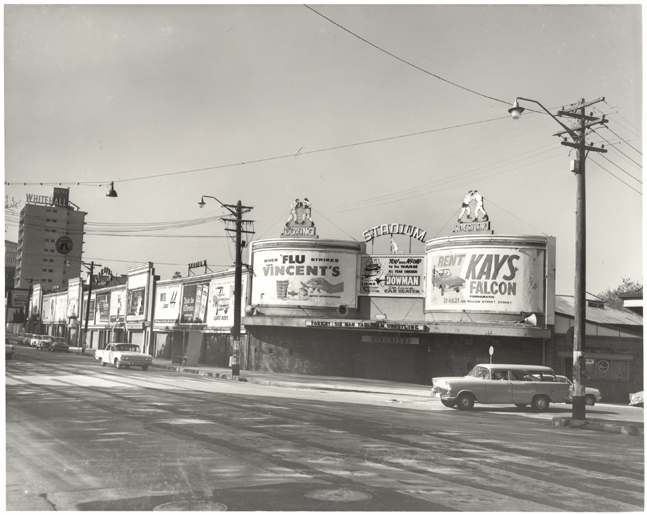
The sound systems available in all the venues for the Beatles concerts were fairly basic – essentially the same facilities used for wrestling, boxing and revivalist meetings. Glenn A. Baker quotes Ron Blackmore, who later supervised PAs for the Rolling Stones 1973 concerts, who explained
“there was one amplifier, of about 100-150 watts, into which ran an average of 8 microphones.. there was no mixer : the singer balanced the sound by moving back and forward on the mic. There was a volume knob and a tone knob and that was it. All this was usually locked away in a back room somewhere, although at the Sydney Stadium it was under the stage. Out front it was even worse. At the Stadium, there was a cluster of tin AWA horns on each of four posts which were aimed at the four seating sections. This was what the Beatles’ voices were carried through, though it wasn’t altogether as bad as it sounds. Groups in the sixties learned their harmonies so well that they could be put in separate rooms and still keep in time with the other guys. The Beatles harmonies weren’t bad at all”. xxix
Dressing rooms at all the concert venues were similarly primitive - draughty wooden boxes, reeking of sweat and liniment - the only exception was the Sydney Stadium where Dawn Miller, wife of Sydney Stadium manager Harry Miller, had redecorated backstage prior to the concerts. Walls were painted, two lounge suites and coffee table installed and curtains hung.
There was a suggestion that this may have been done to divert the Beatles’ attention away from the ‘curse of the Sydney Stadium – the revolving stage’ which was built on top of the boxing ring. Ron Blackmore explained: “Because the microphone cables ran up a centre pole, the stage couldn’t go around continually in one direction. It went one turn and then a little man by side-stage with a lever sent it back the other way so that the cables could untangle”. xxx Perhaps this was just as well – in 1954, in the middle of jazz trumpeter Louis Armstrong’s first Australian performance, dense smoke billowed from under the stage, caused by the electric motor which drove the revolving stage becoming red-hot and threatening to set the stage alight. xxxi
The Sydney Stadium was demolished in 1970 to make way for the Eastern Suburbs Railway.
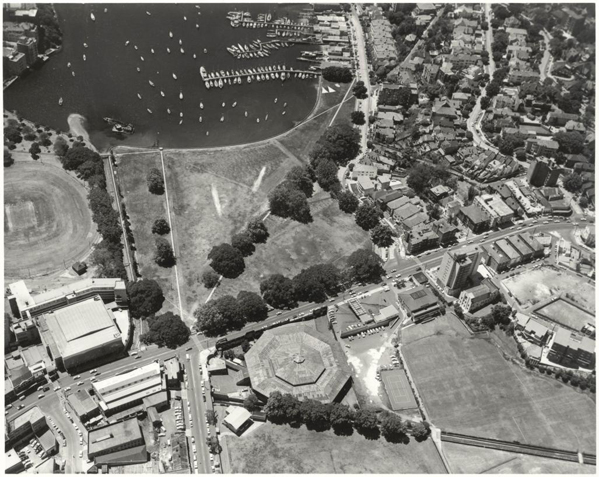
Significance
In 2013 the Museum of Applied Arts and Sciences (the Powerhouse Museum) mounted an exhibition ‘The Beatles in Australia’ chronicling the tour’s lasting impact on Australian music and culture.
“The eruption of Beatlemania in Australia was more intense than anywhere in the world. For thirteen days in 1964 the nation was held in a kind of euphoria, captivated by the talent, the songs and the charm of the Fab Four on their concert tour” The Beatles in Australia , MAAS exhibition 2013-14
Terry Smith quotes rock music journalist and commentator Glenn A. Baker xxxii , on why The Beatles caused such an upheaval in Australia:
“The Beatles were a sign from above, a skewer to lance the boil of stifling traditionalism. They had the power to link us, a colonial backwater, to a big wide world of fads and fashions and uninhibited excitement. The Beatles, their presence and their lingering influence, became a catalyst for the suppressed frustrations of kids who had begun to realise that unquestioned obedience to anyone older was no longer a sacred law. It liberated young Australians…”
Peter Cox, who curated the MAAS exhibition, observed in his 2018 essay, ‘The Beatles in Australia’ , that "The tour was a major event for Australia in the 1960s. It kicked into gear that tumultuous decade, sparking an exciting period in music and culture". He noted that The Beatles visit to Australia influenced a generation of Australians to travel to the UK at a time when London was becoming 'the font of youth fashion and popular culture'. The Beatles tour also paved the way for visits by other English groups. "This ‘British invasion’ caused a sudden and dramatic shift in Australian music. A new generation of local groups, most made up of recent migrants, including The Easybeats, The Bee Gees, Billy Thorpe & the Aztecs, MPD Ltd and The Twilights, led an Australian ‘beat boom’ in the mid-1960s”.
The Beatles had arrived in Australia at a time when ‘overseas travel was prohibitively expensive, and so were international phone calls’ - not everyone owned a television. The Beatles concerts provided a link to the emerging counter-culture of the 1960s and a ‘once in a lifetime celebration of youthful rebellion’ xxxiii for thousands of Sydney-siders.
Baker, Glenn A. The Beatles down under : the 1964 Australia and New Zealand tour. Glebe : NSW, 1982
Coupe, Stuart. The promoters : inside stories from the Australian rock industry . Sydney : Hodder Headline Australia, 2003.
Gould, Jonathan, Can't buy me love : the Beatles, Britain, and America . New York : Harmony Books, c2007.
Hayward, Mark. The Beatles in Australia. Sydney : New Holland Publishers (Australia) Pty Ltd, 2005.
Smith, Terry, The old tin shed : Sydney Stadium 1908-1970 , North Sydney, N.S.W. : Eric Spilsted Publishing, c1999. [Chapter 8 Beatlemania]
https://maas.museum/event/the-beatles-in-australia/
https://maas.museum/the-beatles-in-australia-essay/
https://dictionaryofsydney.org/entry/the_beatles_in_sydney
i The Sydney Stadium, known as 'The Tin Shed', was an iconic large-capacity boxing and concert venue that stood on the corner of New South Head Road and Neild Avenue, Rushcutters Bay, until it was demolished in 1970 to make way for the Eastern Suburbs Railway.
ii Glenn A. Baker The Beatles down under : the 1964 Australia and New Zealand tour, Glebe : NSW, 1982, p. 11
iii Baker, Glenn A. p. 12
iv https://www.heraldsun.com.au/news/victoria/the-beatles-in-australia-50-years-on-how-four-days-changed-melbourne/news-story/5de26eafc62b02396670d7aaf9615f59 .
v Gould, Jonathan, Can't buy me love : the Beatles, Britain, and America . New York : Harmony Books, c2007 p. 21
vi NAA Incoming Passenger Cards NAA: A1225, 9-12 JUNE 1964 NSW BEATLES
vii https://www.smh.com.au/entertainment/the-beatles-let-it-be-in-australia-1964-20140606-zrvui.html
viii Baker, Glenn A., p. 24
ix Baker, Glenn A., p. 14
x https://maas.museum/the-beatles-in-australia-essay/
xi Average Weekly Male earnings in NSW for 1965-1966 as reported by the ABS were about $58.00 (£27.50) https://www.abs.gov.au/statistics/labour/earnings-and-work-hours/average-weekly-earnings-australia
xii Baker, Glenn A., p. 72
xiii Baker, Glenn A., p. 100
xiv Gould, Jonathan, p. 26
xv Gould, Jonathan, p. 57
xvi Gould, Jonathan, p. 273
xvii https://www.rockhall.com/inductees/beatles
xviii Gould, Jonathan, p. 602
xix https://www.rockhall.com/inductees/paul-mccartney
xx A tweet from the Royal Family’s official Twitter page read: “Congratulations Sir @PaulMcCartney who has been made a #CompanionofHonour at Buckingham Palace today for his lasting contribution to music in the UK and Worldwide.”
xxi Gould, Jonathan, p. 127
xxii https://www.classicdrummerhalloffame.com/ringo-starr
xxiii https://www.rockhall.com/inductees/ringo-starr
xxiv https://www.gov.uk/government/news/the-new-years-honours-list-2018 and https://www.bbc.com/news/entertainment-arts-43472196
xxv Baker, Glenn A., p. 11
xxvi Coupe, Stuart. The promoters : inside stories from the Australian rock industry . Sydney : Hodder Headline Australia, 2003. Part 2: The Beatles and Brodziak
xxvii In 2019, Woollahra Council unveiled a plaque commemorating the December 1908 bout
xxviii No title (1912, July 29). Construction : Weekly Supplement to Building (Sydney, NSW : 1909 - 1914) , p. 8. http://nla.gov.au/nla.news-article234759831
xxix Ron Blackmore as quoted in Baker, Glenn A., p. 94
xxx Ron Blackmore as quoted in Baker, Glenn A., p. 96
xxxi Louis Armstrong And Band Get A Hot Reception (1954, October 28). The Sydney Morning Herald (NSW : 1842 - 1954) , p. 1. http://nla.gov.au/nla.news-article18448805
xxxii From Glenn A. Baker, Places and Barely Human Race’ , 1995, as quoted in Smith, Terry, The old tin shed, p 101
xxxiii Robin Gerster and Jan Bassett, Seizures of Youth, The Sixties and Australia . South Yarra, Victoria: Hyland House, 1991, p 4, as quoted in Dictionary of Sydney - The Beatles in Sydney
New plaques are added based on nominations from the community, which are then assessed against selection criteria and researched by a Local History Librarian. Find out more and nominate a person or event for a plaque.
- The 100% ROCK MAGAZINE Team

- Aussie Tour News
- News & articles
- Photo Galleries
- Movies + other
New book about The Beatles Australasian Tour 1964
When We Was Fab: Inside The Beatles Australasian Tour 1964 by Andy Neill and Greg Armstrong – the definitive and deluxe account of the Fab Four’s Australian tour, out in time for the tour’s 60th Anniversary in June
An LP-size hardback book with over 300 pages, lavishly illustrated with over 500 photos and based on decades of research by two internationally-recognised Beatles experts, When We Was Fab: Inside The Beatles Australasian Tour 1964 is in stores May 28

Ahead of the 60th anniversary this June of the Beatles’ historical – and hysterical – visit to Australia, fans will be able to buy the ultimate souvenir of the tour – the most brilliantly researched, assembled and lavishly presented book – with the publication on May 28 of When We Was Fab: Inside The Beatles Australasian Tour 1964 by Andy Neill and Greg Armstrong.
The importance of the Beatles’ Australian tour remains deeply significant, not only in the memories of baby boomers who lived through it, but also to today’s millennials who wish they had. It remains as one of the rare “where-were-you-when-it-happened?” moments for Australians of a certain age, and not just because of the music. The Beatles’ two weeks in Australia were marked by the sorts of massive crowds and mass adulation that have never truly been surpassed.
Scenes of the band disembarking at Sydney airport in the rain and greeting the crowds in the packed Melbourne city centre in front of the Town Hall balcony are indelibly marked into the national psyche. In staid Adelaide, a staggering 300,000 people lined the streets to catch a glimpse of the world’s pop heroes. That welcome is officially acknowledged as the largest ever crowd to welcome the Fab Four.
More than all that, the tour continues to be celebrated as a major landmark in the growth of the nation and an extraordinary cultural turning point, a coming of age for our country and a huge and lasting step in the advancing development of our youth and arts culture. It set the stage in Australia for the remainder of the ’60s as well as the first half of the ’70s, and it remains a major highlight of the Beatles’ remarkable career. And a unique one, given not only the unprecedented mania, but Ringo’s unavailability for the beginning of the trip – which led to the temporary drafting of unknown drummer Jimmie Nicol – and the fact that the Beatles themselves made very little income out of the tour, given their agreement with Australian promoter Kenn Brodziak was made before Beatlemania really took hold anywhere.
The 60th Anniversary of the tour follows last year’s hugely successful and newsworthy Australian tour by Paul McCartney, the end of which coincided with a new Beatles single “Now and Then”. All of this of course followed the record-breaking release of Peter Jackson’s acclaimed The Beatles: Get Back series, which was one of the most-watched television events of 2021. The Beatles remain a ubiquitous presence.
Written and compiled by UK-based New Zealander Andy Neill (whose previous work has included acclaimed books on The Who and Rod Stewart & The Faces) and Melbourne-based Beatles expert Greg Armstrong (co-host of the world’s longest-running Beatles radio show), When We Was Fab: Inside The Beatles Australasian Tour 1964 is the definitive account of this most extraordinary cultural turning point. It tells the story in unprecedented detail, with lavish, eye-popping illustration – using hundreds of evocative and mostly never-before seen images, including original documents, press clippings, vintage memorabilia and hundreds of unpublished photographs – and is beautifully designed.
Based entirely on exhaustive first-hand research spanning two decades, When We Was Fab: Inside The Beatles Australasian Tour 1964 is authoritatively written by experts on the subject. The authors’ process involved sourcing hundreds of original newspapers, magazines and business documents as well as first-hand interviews with over 100 key participants – many of whom have not previously shared their memories – including promoters, support acts, press and radio personalities, as well as original fans who came out in their thousands to see the Beatles. As a result, a vast amount of new information behind those extraordinary weeks appears for the first time, correcting many ‘facts’ misreported for six decades. It really will be the last – and lasting – word.
The world continues to love and enjoy the Beatles. Their music resonates with each new generation. As has occurred with past celebrations of the tour, the 60th anniversary in June 2024 is certain to raise significant interest around Australia, and When We Was Fab: Inside The Beatles Australasian Tour 1964 is the brim-filled, ready-made one-stop-shop for stories and images relating to those wild few weeks.
The Beatles’ landed in Australia at Sydney’s Mascot airport just before 7:45am on Thursday 11 June 1964. Their Australian tour consisted of 20 concerts. There were two shows performed each playing day, at 6pm and 8.45pm, as follows:
Adelaide (4 concerts) – Friday 12 June and Saturday 13 June Melbourne (6 concerts) – Monday 15 June, Tuesday 16 June, Wednesday 17 June Sydney (6 concerts) – Thursday 18 June, Friday 19 June, Saturday 20 June Brisbane (4 concerts) – Monday 29 June, Tuesday 30 June
Key book features:
★ Format: 295mm x 295 mm coffee table style, glossy full colour pages. ★ 312 pages, 167,000 words (including index and acknowledgements), nearly 1,000 images (including over 540 photos, 130 tour documents, 200 press clippings; most images are previously unpublished). ★ Lavishly designed throughout by the Grammy nominated UK-based graphic artist, Philip Lloyd-Smee. ★ Captures the memories of Australian and New Zealand tour principals and key players, drawn from over 100 interviews conducted or sourced by the authors. ★ Details many previously unknown aspects of the tour. ★ Fully Indexed.
About the authors:
Andy Neill is a UK-based music writer, researcher and historian, born in New Zealand. He co-wrote the best-selling, illustrated authorised biography, Anyway Anyhow Anywhere: The Complete Chronicle Of The Who (Friedman/Fairfax, 2002). Additionally, he compiled and annotated two Beatles photo anthologies, Across The Universe: The Beatles On Tour And On Stage (Haynes Publishing, 2009) from the British Daily Mirror’s photo archive, and Looking Through You: Rare And Unseen Photographs From The Beatles Book Monthly Archive (Omnibus Press, 2015). He is the author of an acclaimed biography, Had Me A Real Good Time about the lives and careers of Rod Stewart and the Faces (Omnibus Press, 2011). His most recent book was the warmly received chronicle of the pioneering 1960’s UK TV pop music programme Ready, Steady, Go! The Weekend Starts Here (BMG, 2020).
Andy has compiled and/or contributed extensive liner notes for archival reissues, including the back catalogue of the Who and the Kinks. He has been consultant, editor and archive producer on numerous best-selling music biographies and documentaries. His music writing has appeared in magazines including Record Collector, Mojo and Ugly Things.
Greg Armstrong is a Melbourne-born and based radio presenter, researcher and Beatles historian. He is a co-presenter on Australia’s Let It Be Beatles radio programme (LIBB), the world’s longest running, weekly live radio show dedicated to the Beatles, on Melbourne’s 88.9 WynFM, streaming live with a global listener base. The show is now in its 32nd continuous year live on air, having broadcast over 1,450 episodes. He maintains strong connections administering the LIBB Facebook group and Blogspot.
Greg has made numerous appearances on radio and television programmes, been interviewed about the Beatles’ Australian tour (multiple times by ABC radio), provided Beatles historical expertise (The Auction Room, ABC TV) and regular special guest appearances on various radio shows. He was also archival consultant to the widely acclaimed Beatles’ Australian tour 40th anniversary multimedia theatre shows and has contributed to a number of Beatles features in Australian and worldwide newspapers and magazines.
www.facebook.com/AussieFab
When We Was Fab: Inside The Beatles Australasian Tour 1964 by Andy Neill and Greg Armstrong is published June 1, 2024 by Woodslane Press.
Some other stuff you might dig

Share this:
- Click to share on Twitter (Opens in new window)
- Click to share on Facebook (Opens in new window)
Category : News
About the Author ( Author Profile )
If you enjoyed this article, subscribe to receive more just like it.

Leave a Reply
Name ( required )
Email ( required; will not be published )
XHTML: You can use these tags: <a href="" title=""> <abbr title=""> <acronym title=""> <b> <blockquote cite=""> <cite> <code> <del datetime=""> <em> <i> <q cite=""> <s> <strike> <strong>
FEATURED VIDEO
FALLING IN REVERSE - All My Life (featuring JELLY ROLL)
BRIDGET BARKAN - Good Things
LEAGUE OF DISTORTION - My Hate Will Go On
Website Hits Since August 2012
Buy us a beer!
- Australia News
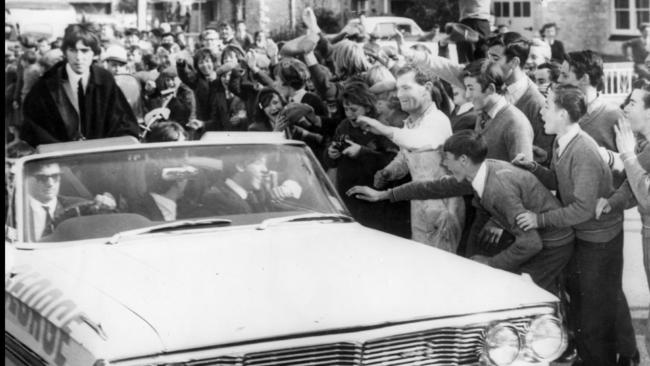
The Beatle’s ‘conquering’ of Australia encapsulated in new book
A new book with never before seen images and interviews from The Beatle's visit down under has been released on the 60th anniversary of the tour.
Beatlemania erupted on to the streets of Melbourne, Sydney, Adelaide and Brisbane, making up the largest crowds to greet the band on their first world tour.
Speaking to Sky News Australia, ‘When We Was Fab’ Author Greg Armstrong described the book as a celebration of The Beatles “conquering Australia” all those years ago.
- Entertainment
Were you in the crowd the day The Beatles landed in Melbourne 50 years ago?
WHEN The Beatles touched down in Melbourne 50 years ago, the world’s biggest band set the benchmark for pulling a crowd. It was a precedent that remains unmatched.
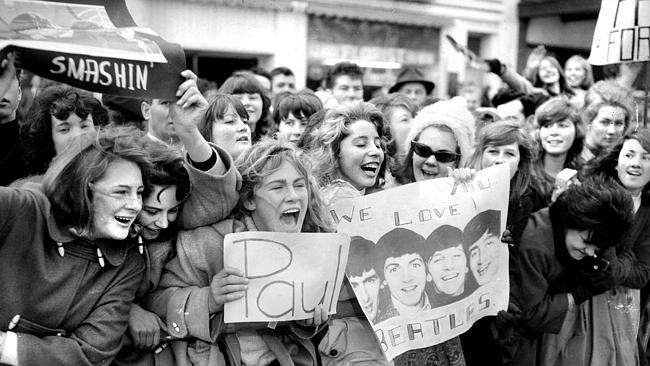
Pauline Hanson responds to Irwin threat

‘Angry’: Netflix star ‘kicked out of club’
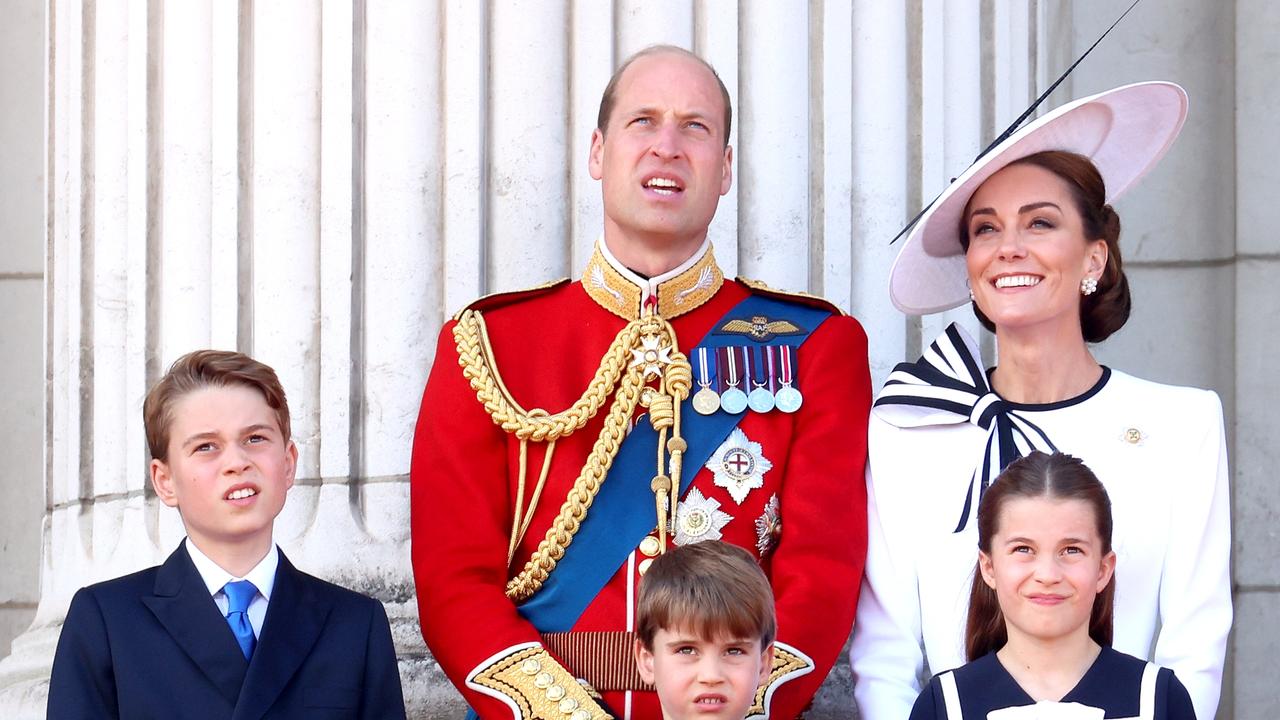
Major thing wrong with new Kate pic
MELBOURNE had never seen anything quite like it and hasn’t since.
When The Beatles touched down in Melbourne 50 years ago, the world’s biggest band set the benchmark for pulling a crowd.
It was a precedent that remains unmatched.
Not even today’s contemporary pop stars could top it.
Not One Direction or Justin Bieber during their Victorian visits last year; nor visiting talk show hosts Oprah or Ellen.
Indeed, not even Her Majesty Queen Elizabeth could rally a crowd on Swanston St quite like John, Paul, Ringo and George did back in 1964.
It was June 14 when Beatlemania swept the city.
It was, say some, the breakout moment of the “Swinging 60s’’ Down Under.
A quarter of a million people lined the streets between Essendon Airport and the CBD.
Shop windows were plastered in band posters.
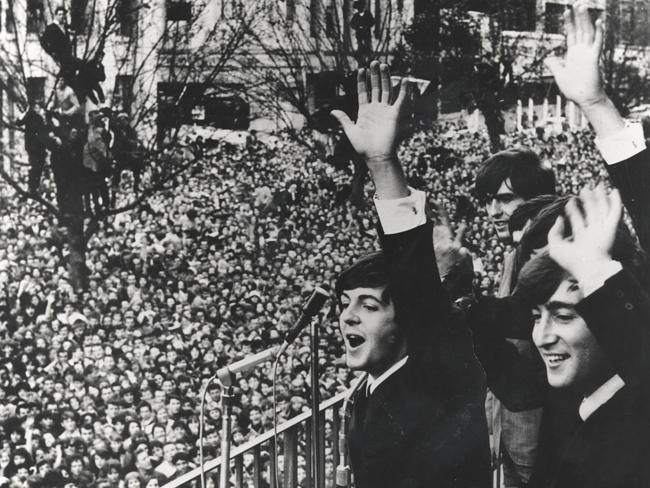
Peering beyond them, proprietors might have muttered to themselves at the sight of it all: a crying apocalypse of besotted teenagers who could barely hold themselves up at the thought of glimpsing the famous “Scousers”.
They lined a barricade at the airport, 10 deep. When the band touched down, fans fell like dominoes. Police looked puzzled but helped where they could.
One girl jumped the fence and promptly fainted.
Ringo Starr, who arrived separately, zipped past the mob in a Bentley, but not before a few fans leapt at his window.
Were you or your friends and family in the crowd that day? Do you have a Beatles story to tell? If so, contact Aaron Langmaid at [email protected]
At least one came away with his signature.
The adoration was widespread but it wasn’t shared by everybody.
When the remaining band members jetted in, police had to confiscate eggs from a group of “We love Elvis’’ fans near the Essendon Hotel.
The rogue group had waited patiently for hours hoping to make their mark. Even if they had succeeded, it needn’t have mattered.

By the time the band was driven into the city, crowds outside the Southern Cross Hotel on Exhibition St numbered more than 15,000.
A convoy of two cars and mounted police, forced their way through, sirens wailing in a grand
decoy to shift the masses.
The Beatles was ushered into the hotel through the car park.
The proprietor of the hotel next door was forced to call in authorities to stop kids climbing onto the roof for a better perch.
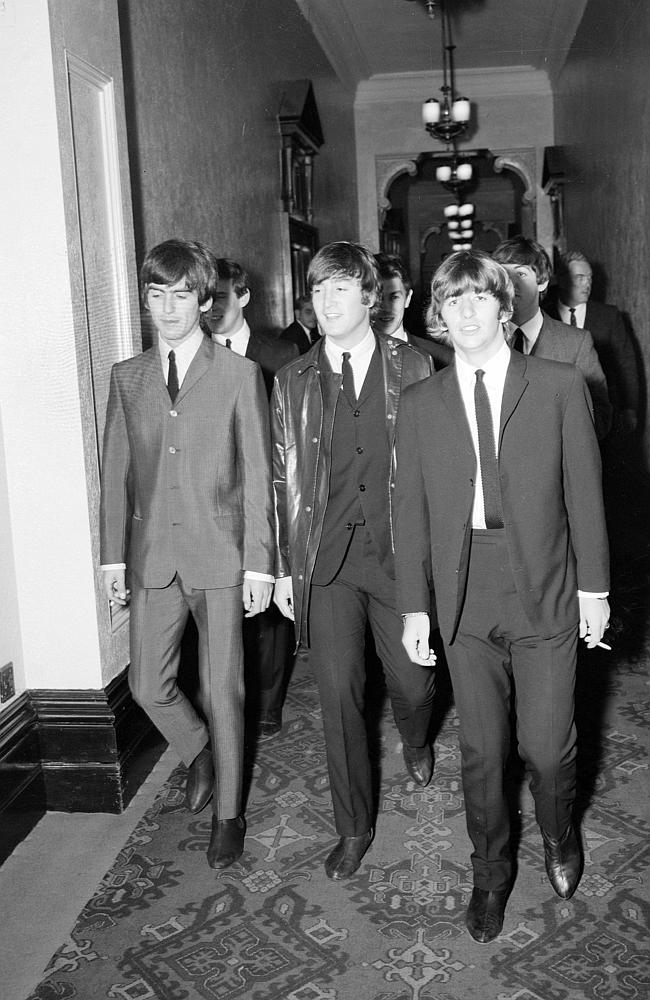
By the time they emerged on a balcony and waved, the teens huddled below lost all sense of self.
Mouths dropped. Eyes glazed over.
There was clutching of hair and collapsing.
More than 100 people were treated by paramedics - the hotel foyer was eventually used as a casualty station.
More than 200 shoes were among the piles of lost property, such was the pandemonium created from the biggest band on the planet.
Even within the democratic walls of a more malign civic reception, the Beatles were forced to leave early when they were shoved between wide-eyed councillor and city socialite.
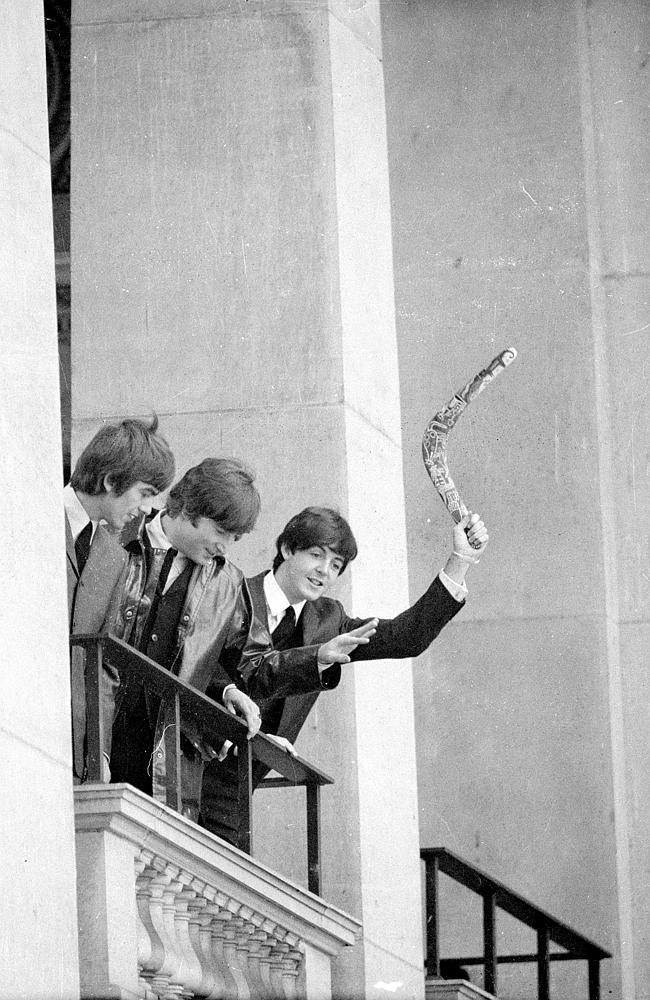
Such was the adulation, newspaper chiefs called in a psychologist to get to the bottom of it all.
“Beatlemania,” came the verdict, “is a limited form of emotional expression - disapproved perhaps, but permitted because it is not criminal.’’
But there were rare moments of calm in the storm.
At the Town Hall, Paul McCartney sat at a piano and led his band mates in an impromptu singalong with the Lord Mayor and his family.
They each blew on a didgeridoo and before they left, Ringo was escorted into the Mayor’s office where he tried on the official robes and chains.
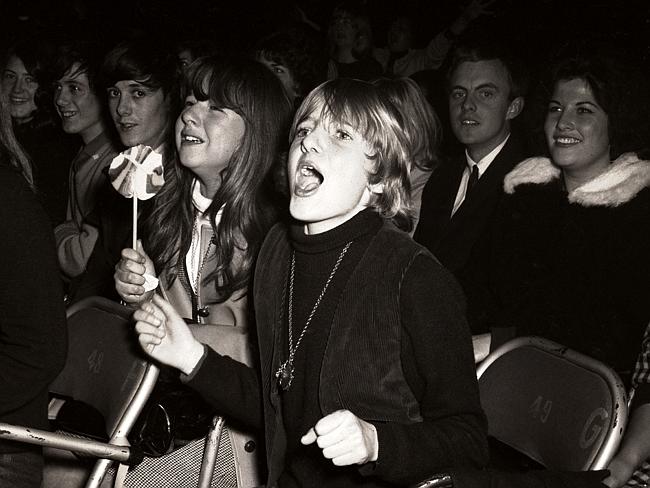
Then Melbourne Sun reporter Cathie Olsen was granted half-an-hour access inside their hotel room.
“Put that notebook away,” Ringo told her. “We’ve had enough of that today.’’
John Lennon, she reported, paced up and down the suite during their half-hour chat.
“I’m sick of being locked in a hotel,” Lennon said. “I’m bored.’’
At one point, Olsen said Lennon let her try on his glasses.
In the downtime, somehow, Harrison was able to borrow an MG and reportedly drove himself down to the Mornington Peninsula.
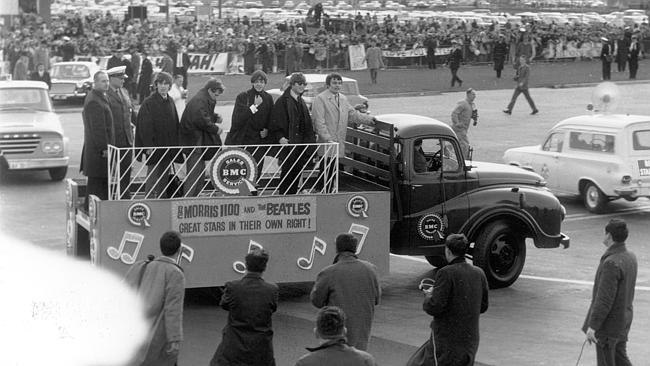
The remaining band members “clowned’’ their way through a haircutting session at the hotel. Two lucky local hairdressers souvenired their locks.
By the time the Beatles made it to Festival Hall, police numbers had been bolstered with military personnel, determined to keep crowds under control for the six 35-minute shows. They almost did.
During one of the concerts, in the final moments of the band’s last song, Williamstown teenager Brent McAuslan made a run for the stage and the history books.
Dodging police, he clambered onto the stage and approached a shocked Lennon, who smiled and shook his hand.
“How are you doing cobber?” Lennon said.
McAuslan had barely issued his reply before police dragged him off.
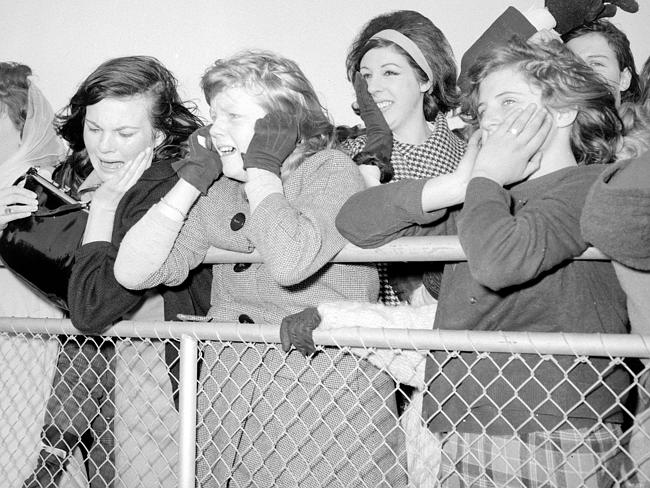
The entire moment was captured in print and grainy television footage.
“It’s hard to explain it,” McAuslan said in a recent interview.
“There was like a hysteria. It was kind of a form of worship, of idolisation.
“We had this happy moment,” he said of his brief encounter.
“It seemed like there was this love or something genuine there.’’
He’s older now and his musical tastes may have changed somewhat, but no amount of time can fade a memory quite like that.
Add your comment to this story
To join the conversation, please log in. Don't have an account? Register
Join the conversation, you are commenting as Logout
One Nation leader Pauline Hanson responds to Robert Irwin’s threat of defamation over her latest cartoon episode.
The Stranger Things star was reportedly removed from a nightclub after his behaviour caught the attention of other partygoers.
The world is celebrating after the Princess of Wales’ return to public duties but her comeback has thrown up a major issue no one is talking about.
Television.AU
The History of Australian Television
When Beatlemania came to Australia
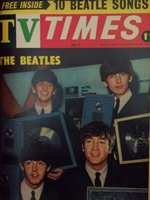
Beatlemania was everywhere in 1964. It was a rare week if TV Week and TV Times magazines, then the dominant barometers of popular culture, had failed to feature a front cover or report anything on the fab four. In the lead up to the Australian tour TV Times had featured special listings of Beatle lyrics. The magazine also ran a competition — Beaticles — where readers were invited to send in sketches of their own Beatle-inspired creations. “The more way-out your idea is the better, so long as it isn’t “sick”,” TV Times suggested to potential artists. The contest offered weekly prizes of a Beatles record with the grand prize of £ 50 worth of records of the winner’s choosing.
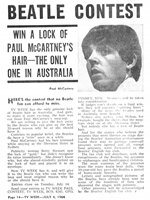
TV Week also published a book, cover-to-cover of nothing but The Beatles — “The Beatles in colour. The Beatles at home. The Beatles at play. What are the Beatles REALLY like? See a REAL Beatle hairdo!”
Inevitably with such public hysteria over the band’s arrival in Australia, the media clamoured for a piece of Beatles action — and it started before they had even touched down.

Despite all the hype and the cheers of the enthusiastic crowd, the live TV broadcast of the Beatles arriving at Sydney failed to impress TV Times critic FC Kennedy :
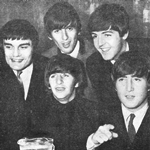
On Saturday evening ABC screened the special Beatles edition of British pop show Ready, Steady, Go , produced by Australian Robert Fleming for British channel Rediffusion London . In Melbourne, HSV7 had made a last minute program schedule change, with the one-hour special Around The Beatles , screening at 7.30pm. The Age previewed the program, also from Rediffusion, as “possibly the most entertaining show yet taped featuring the group”.
Seven also had two other Beatles specials ready to roll over the following nights — Sydney radio man Bob Rogers ‘ half-hour report on The Beatles and the second British-produced Big Night Out With The Beatles special. (The first had aired in Australia some months earlier)
Sunday mid-afternoon saw The Beatles land in Melbourne. Both HSV7 and GTV9 had set up outside broadcasts to catch the first glimpse of the band’s arrival at Essendon Airport. Both channels also bumped afternoon programs from their regular timeslots to cover the band’s press conference at the Southern Cross Hotel, where an estimated 20,000 fans had gathered outside to see their pop star idols.
Having performed in Adelaide, Melbourne, Sydney and Brisbane, by the end of the month as their Australian tour was drawing to a close, Beatles member John Lennon was the speaker on ABC’s Guest Of Honour radio program. His speech, later printed in full in the ABC-published TV Times, covered various topics including the band’s formation, his home town of Liverpool, some of his artistic inspirations and highlights of the Australian tour:
“I thought I’d like to take this opportunity, because we’re coming to the end of this Australian trip and, you know, we’d just like to thank everybody — you know, from police to Lord Mayors. (Even though we were misquoted about not liking Lord Mayors, we do like them as much as everybody else, and they’re all very nice) And all the receptions we’ve been to were all well handled (which a lot of them aren’t sometimes). And we’d just like to thank everybody in Australia, because it seems as if we’ve met everybody or at least seen them outside a window, although we were disappointed we didn’t see any Aborigines. We just thank you all very much, and goodbye.”
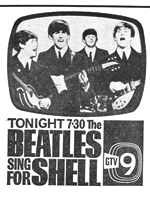
The Beatles Sing For Shell was later reported as one of the most-watched TV specials of the decade, averaging a rating of 53.5 (per cent of households) across both Sydney and Melbourne.
To commemorate the 50th anniversary of The Beatles’ only Australian tour, ABC is screening a special, When The Beatles Drove Us Wild, Tuesday 10 June, 8.30pm, ABC1.
Source: The Age , 11 June 1964, 15 June 1964. TV Week , 14 March 1964, 4 July 1964. TV Times , 24 June 1964, 8 July 1964. Australian TV: The First 25 Years, 1981.
1 thought on “ When Beatlemania came to Australia ”
I’m doing a school major project on para-social relationships. Do you know anyone who was part of Beatlemania at the time, or any other information I might be able to use?
Leave a Reply Cancel reply
Your email address will not be published. Required fields are marked *
This site uses Akismet to reduce spam. Learn how your comment data is processed .
Related News
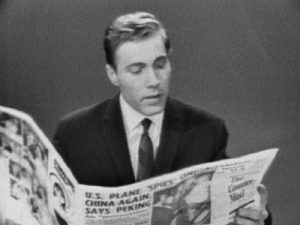
Obituary: Kevin Sanders
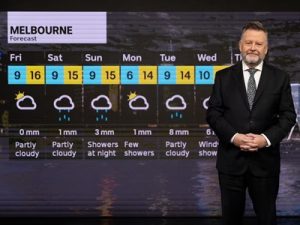
Paul Higgins retires from ABC
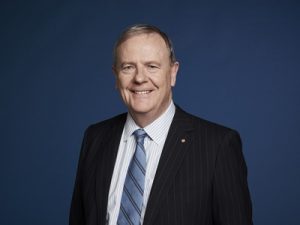
Nine chair Peter Costello steps down
You may have missed.
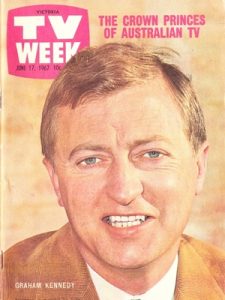
On This Day — 17 June
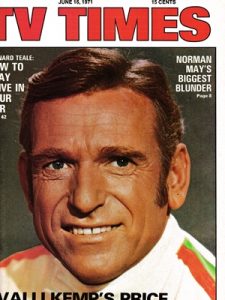
On This Day — 16 June
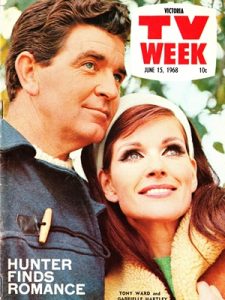
On This Day — 15 June
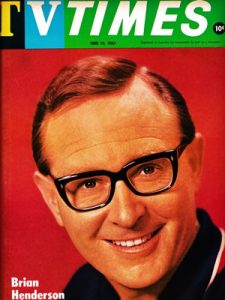
On This Day — 14 June
Travel: Sydney to Wellington
Although they returned to Australia for final concerts in Brisbane on 29 and 30 June 1964, on this day The Beatles flew from Sydney Airport to Wellington, New Zealand.
As The Beatles prepared to leave Suite 801 of Sydney’s Sheraton Hotel, they heard a tap on the windows. It was Peter Roberts, a 20-year-old Liverpudlian living in Australia, who had scaled eight storeys in darkness via the hotel drainpipes.
We were all shoving our dirty rags into a case when I heard a knock on the window. I thought it must have been one of the others mucking around so I didn’t take any notice, but the knocking kept on so I went over to the balcony – and there was this lad who looked just like a typical Liverpool lad. I knew before he opened his mouth where he was from, because nobody else would be climbing up eight floors. This lad – Peter – walked in and said, ‘Hullo dere,’ and I said, ‘Hullo dere,’ and he told me how he’d climbed up the drainpipe, from balcony to balcony. I gave him a drink because he deserved one and then I took him around to see the others, who were quite amazed. They thought I was joking when I told them.
At Sydney Airport The Beatles were greeted by an estimated 10,000 fans – their biggest number yet. After flying 1,500 miles to Wellington they were greeted by another 7,000 people, and were given traditional nose-rubbing kisses from Maori women in native dress.
When we were flying in to New Zealand, it looked like England – like Devon, with cows and sheep. But in those days we were looking for some action, and there was absolutely nothing happening. We were in the hotel room, sitting around eating fish and chips with peas, and watching television. And suddenly, at about nine o’clock at night, the channels all closed down. So we threw our dinners at the TV.
The Beatles performed four shows at Wellington’s Town Hall over the following two nights.
Also on this day...
- 2016: Ringo Starr and his All-Starr Band live: Foellinger Theatre, Fort Wayne
- 2015: Paul McCartney live: Wells Fargo Center, Philadelphia
- 2014: Ringo Starr and his All-Starr Band live: Circus Maximus Theater, Atlantic City
- 2006: Ringo Starr and his All-Starr Band live: Wells Fargo Center for the Arts, Santa Rosa
- 1992: Ringo Starr and his All-Starr Band live: Garden State Arts Center, Holmdel
- 1976: Wings live: Forum, Inglewood
- 1968: Recording, mixing: Revolution 1, Revolution 9
- 1968: Paul McCartney flies from New York to Los Angeles
- 1967: Mixing: All You Need Is Love
- 1966: Recording, mixing: She Said She Said
- 1966: Mixing, editing: Love You To, I Want To Tell You, Here, There And Everywhere, For No One, Doctor Robert, Taxman
- 1965: Day off in Paris
- 1963: The Beatles live: Odeon Cinema, Guildford
- 1963: John Lennon’s assault of Bob Wooler reaches the national press
- 1962: The Beatles live: Tower Ballroom, New Brighton, Wallasey
- 1961: The Beatles live: Top Ten Club, Hamburg
Want more? Visit the Beatles history section .
Latest Comments
I wonder if the references to ‘Auckland’ in this article above need to be replaced with ‘Wellington’? I may be wrong, but the steep house-lined hills in the films’ background suggest it’s the airport of Wellington, not Auckland. Various other (non-Beatles) websites also suggest Wellington was the first point of contact.
P.S. I’m loving the effort that’s been put into compiling this history. I’ve been making my way through it, on and off, for months now.
It’s definitely Wellington . Why would they’ve landed in Auckland which is 400 miles North of Wellington when they had to perform in Wellington the next day ? They flew to Auckland on June 24th
Thank you both – corrected now.
Leave a Reply


COMMENTS
The Beatles' 1964 tour of Australia. The Beatles' 1964 tour of Australia was a several week tour performed by the British rock band the Beatles as a part of their 1964 world tour. [1] [page needed] The tour was their first and only tour of Australia. The tour was notable particularly because Jimmie Nicol had replaced a hospitalised Ringo Starr.
Thursday 11 June 1964 Travel 1 Comment. The Beatles flew from Hong Kong to Sydney, stopping en route in Darwin to allow their aeroplane to refuel. Although it was an unscheduled stop, 400 fans were waiting as they landed in Darwin at 2.35am. None of us slept on the flight to Australia. There were reports of impossible weather on the eastern ...
That Australian teenagers had the opportunity to see The Beatles in person in 1964 was due to a stroke of luck for tour promoter Kenn Brodziak. In late 1963, Brodziak secured the then up-and ...
A Melbourne radio DJ said, "They would be a good thing, they're going to grow". This recommendation resulted in the Beatles' 1964 tour of Australia, and later an unforgettable reception in Adelaide.
The Beatles' final concert encore at Festival Hall on June 17, 1964. Picture: When We Was Fab: Inside The Beatles Australasian Tour 1964. The book, co-written with Andy Neill, features never ...
The day after they landed on Australian soil, The Beatles flew from Sydney to Adelaide in a chartered Ansett ANA jet, arriving at 11.57am on 12 June 1964. An estimated 200,000 people lined the 10-mile route between Adelaide Airport and the city centre in the hope of seeing The Beatles' motorcade. More than 30,000 surrounded the Town Hall ...
The Beatles wave to the crowd below from the balcony of the Southern Cross Hotel in Melbourne, during their Australia/NZ tour, June 1964. "I was brought in especially for the tour," he recalls ...
10:17pm Jun 12, 2024. Sixty years after Beatlemania captivated Adelaide, fans have hosted a special event at the city's town hall to relive the once-in-a-lifetime experience of the Beatles' 1964 ...
3rd Upload attemptThis is currently the most complete best quality upload of the Full 1964 Concert in Melbourne (and finally in correct order). Video has bee...
The Beatles 1964 world tour was the Beatles' first world tour, launched after their 1964 UK tour. The reception was enthusiastic, with The Spectator describing it as "hysterical". ... The Beatles Down Under: the 1964 Australia & New Zealand tour. Glebe, NSW Australia: Wild & Woolley. Baker, Glenn A (1985).
For three weeks, the Beatles turned Australia and New Zealand upside-down as they performed 32 concerts in eight cities.Added videos of missing songs from ot...
The Beatles landed in Australia at Sydney's Mascot airport just before 7.45am on Thursday 11 June 1964. Their Australian tour consisted of 20 concerts. There were two shows performed each playing day, at 6pm and 8.45pm, as follows: Adelaide (4 concerts) - Friday 12 June and Saturday 13 June. Melbourne (6 concerts) - Monday 15 June, Tuesday 16 ...
A tale of two Beatles. The Beatles can't have slept much in the early 1960s. Their procession of perfect pop songs and endless string of live commitments and radio appearances puts the work ethic ...
The Beatles' final two shows in Melbourne, Australia, took place on 17 June 1964. In the afternoon George Harrison went driving in an MG in the Dandenong Mountains with tour organiser Lloyd Ravenscroft. Concerned with more important matters, John Lennon, Paul McCartney, and Ringo Starr had their hair cut in their hotel, the Southern Cross. This was The Beatles' last of three consecutive ...
The Beatles are greeted in Adelaide by 350,000 people - tipped to be the largest civic gathering to see them in their history.
The Beatles spent almost three weeks in Australia and New Zealand. Touching down in a wet and cold Sydney on Thursday, 11 June 1964, they played 32 concerts in eight cities: first Adelaide (where drummer Ringo Starr, suffering from tonsillitis and pharyngitis, was replaced by Jimmie Nicol), then Melbourne (with Starr again), Sydney, Wellington, Auckland, Dunedin, Christchurch and two final ...
The Beatles kicked off the year with a jam-packed schedule of touring, filming and recording - as well as a visit to Australia. In June 1964, the Fab Four landed on the shores of Sydney to kick ...
The scenes in this clip effectively serve to contextualise the pop culture phenomenon of Beatlemania. This newsreel features live footage of The Beatles and their fans during a concert in Sydney during their 1964 tour of Australia. Concert footage of popular acts was still in its infancy in the 1960s. This professionally shot footage is the ...
The Beatles Concerts at the Sydney Stadium 18-20 June 1964. In June 1964, 'Beatlemania' arrived in Sydney. The Beatles performed six concerts at the Sydney Stadium i, Rushcutters Bay as part of a two week tour of Australia and New Zealand.. For all the charisma the four emitted, the real stars of the tour were the hundreds of thousands of ordinary people who screamed in public and viewed in ...
The Beatles' landed in Australia at Sydney's Mascot airport just before 7:45am on Thursday 11 June 1964. Their Australian tour consisted of 20 concerts. There were two shows performed each playing day, at 6pm and 8.45pm, as follows: Adelaide (4 concerts) - Friday 12 June and Saturday 13 June. Melbourne (6 concerts) - Monday 15 June ...
The Beatles live: Sydney Stadium, Sydney. The Beatles had arrived in Sydney, Australia on 11 June 1964, but didn't perform there until this day, 18 June. They arrived in the city by aeroplane at 7.40am. Around 1,200 fans greeted them at the airport, along with 300 police officers. The Beatles were taken to their suite at the Sheraton Hotel ...
"A new book with never before seen images and interviews from The Beatle's visit down under has been released on the 60th anniversary of the tour.\n\nBeatlemania erupted on to the streets of ...
Brisbane, Australia. Title reads 'Beatles Back in Australia!'Various shots of the crowds of mainly youngsters waiting on the tarmac of Brisbane airport at ni...
Excited fans line Exhibition Street to see The Beatles during their tour of Melbourne in 1964. By the time the band was driven into the city, crowds outside the Southern Cross Hotel on Exhibition ...
8 June 2014. 1. It is 50 years since The Beatles toured Australia. It was the biggest pop culture event to hit our shores in the 1960s — providing scenes of hysteria not seen again until ABBA came to Australia a decade later. Beatlemania was everywhere in 1964. It was a rare week if TV Week and TV Times magazines, then the dominant barometers ...
Greg Perano was such a huge Beatles fan that in June 1964 he climbed a hill in his home town of Picton, on New Zealand's South Island, to hear them play. They were performing in Wellington, 100 ...
The Baetles toured Australia in 1964. This Channel 9 news report recalls the Beatle's visit to Adelaide Austalia. Bob FrancisChannel 9Channel 9 NewsRon Tre...
Travel: Sydney to Wellington. Although they returned to Australia for final concerts in Brisbane on 29 and 30 June 1964, on this day The Beatles flew from Sydney Airport to Wellington, New Zealand. As The Beatles prepared to leave Suite 801 of Sydney's Sheraton Hotel, they heard a tap on the windows. It was Peter Roberts, a 20-year-old ...
Fans of the Beatles wave as the band members Jimmie Nicol (drummer replacement for Ringo Starr), Paul McCartney, John Lennon and George Harrison arrive at Kai Tak Airport in Hong Kong on June 8, 1964.